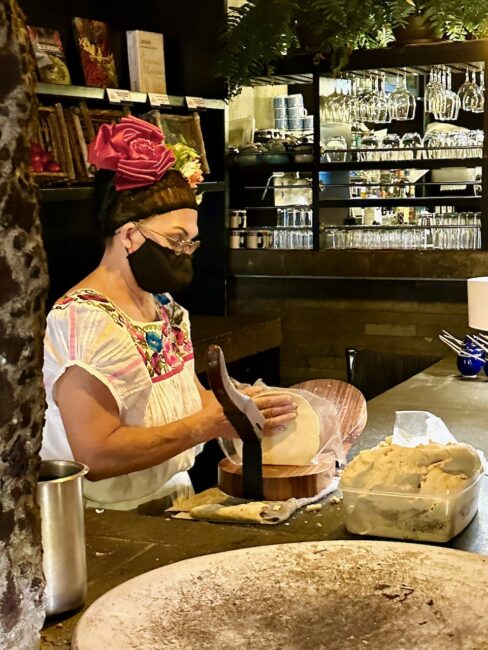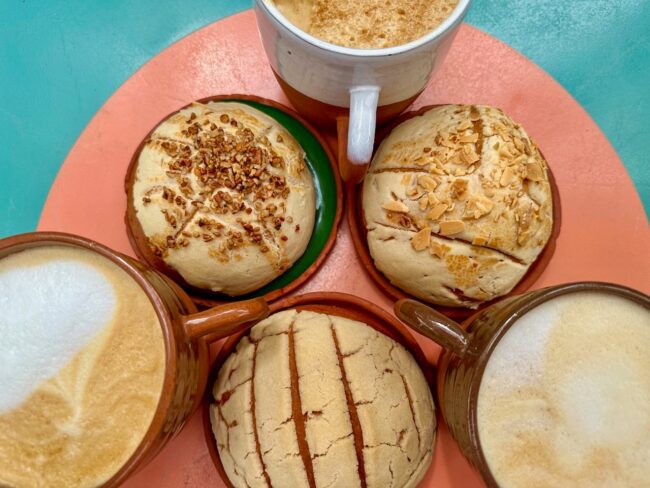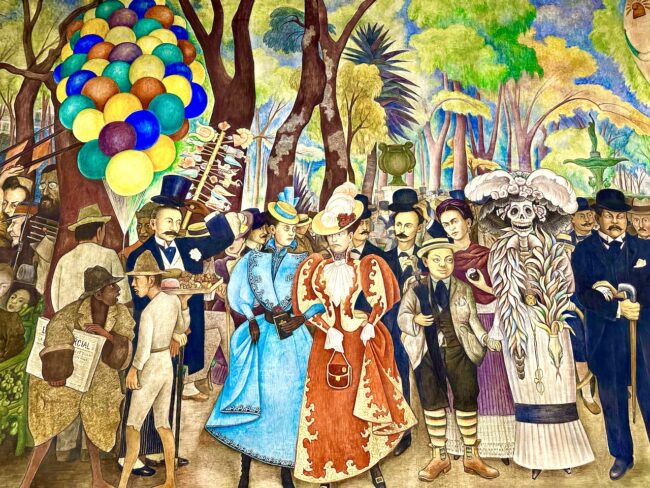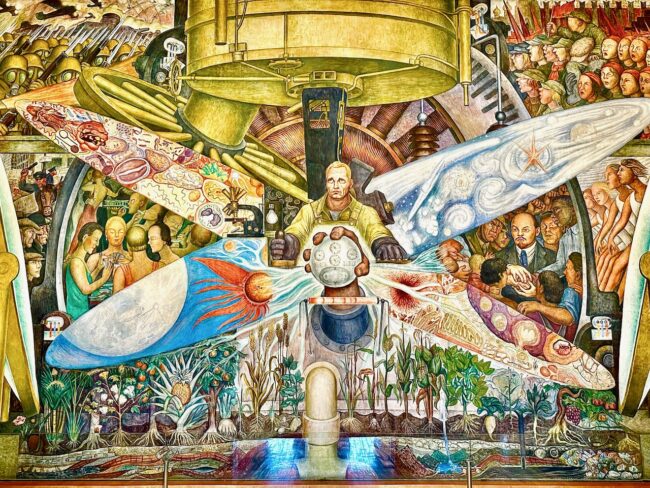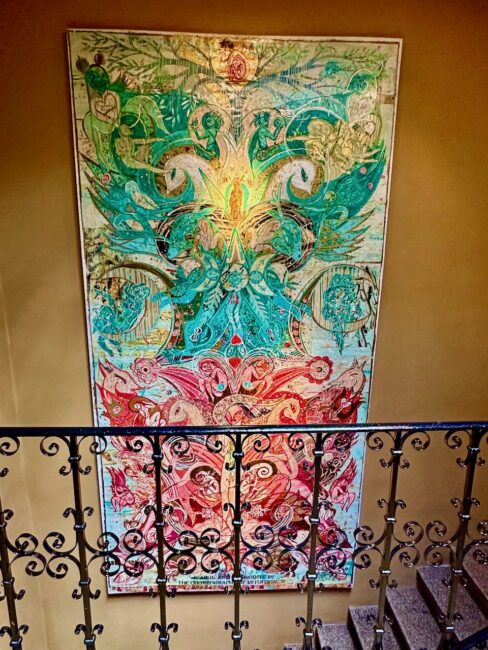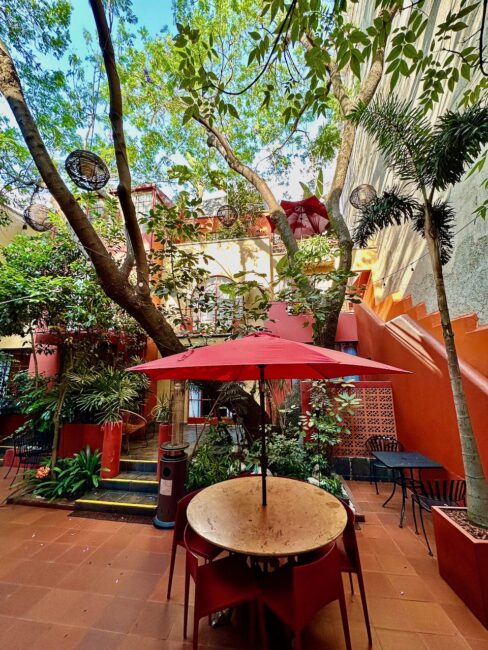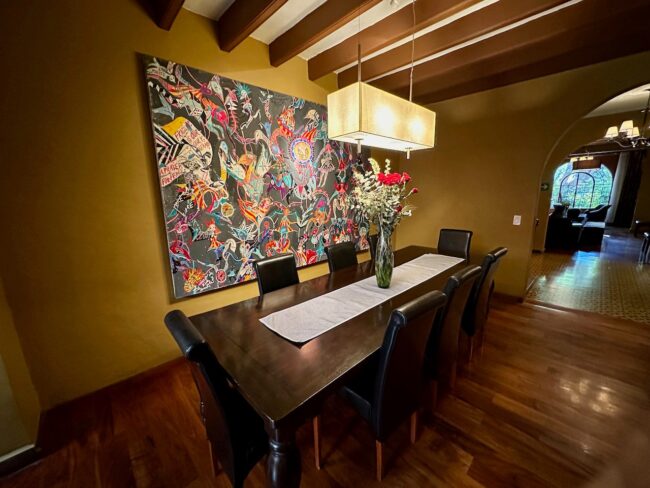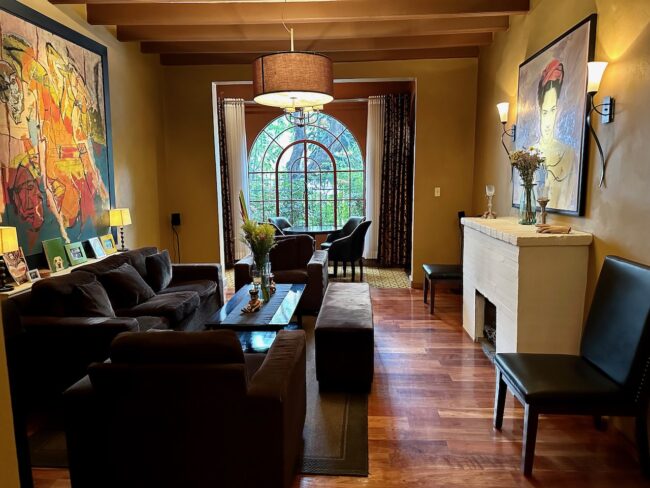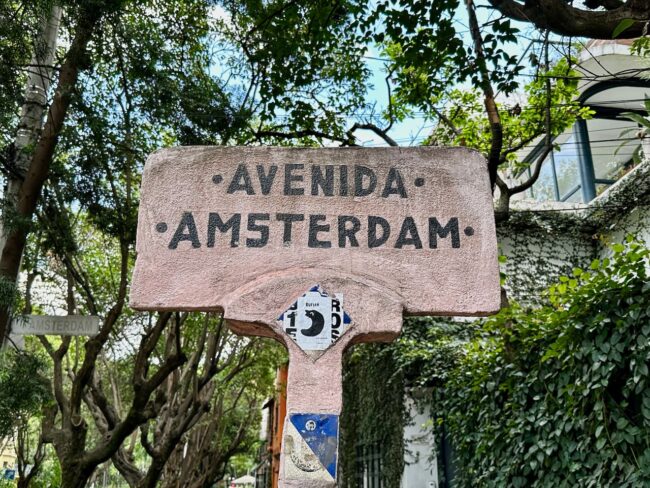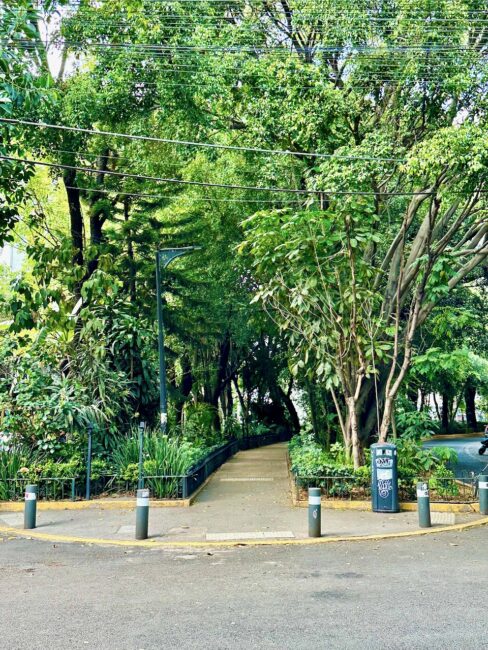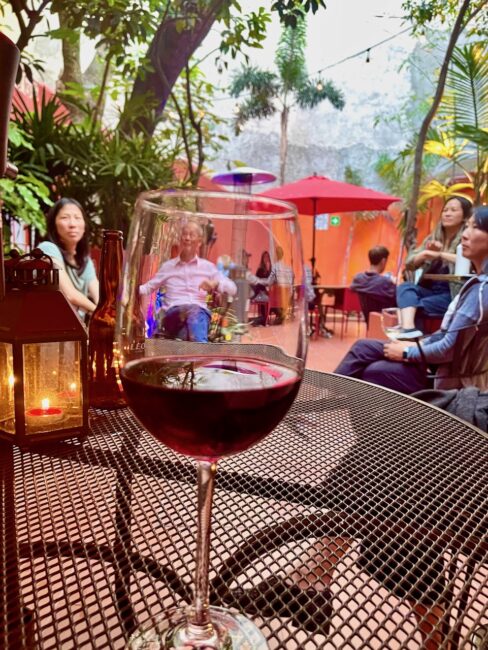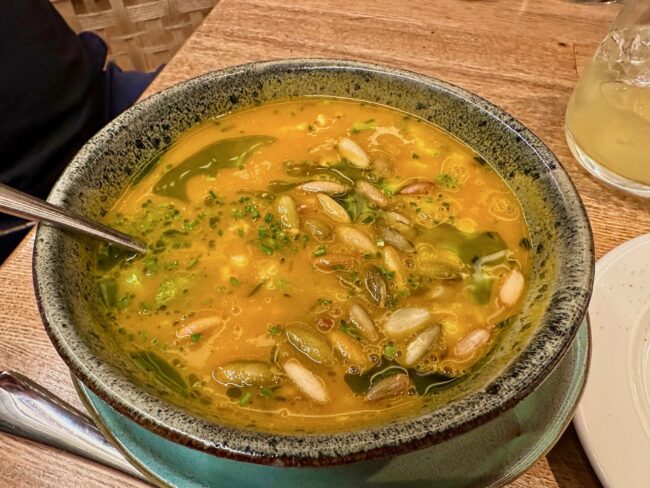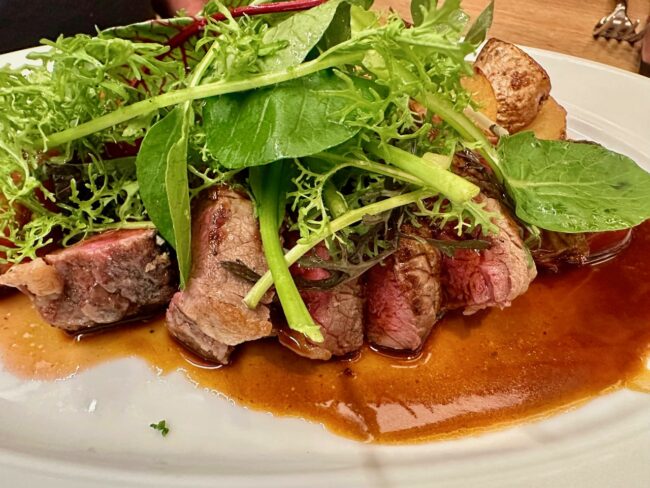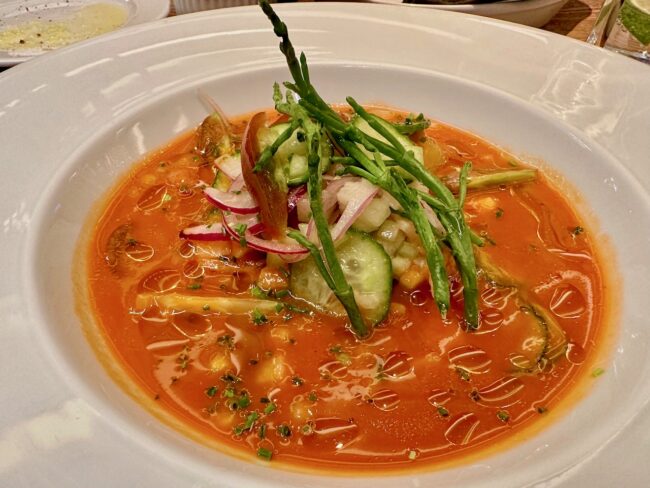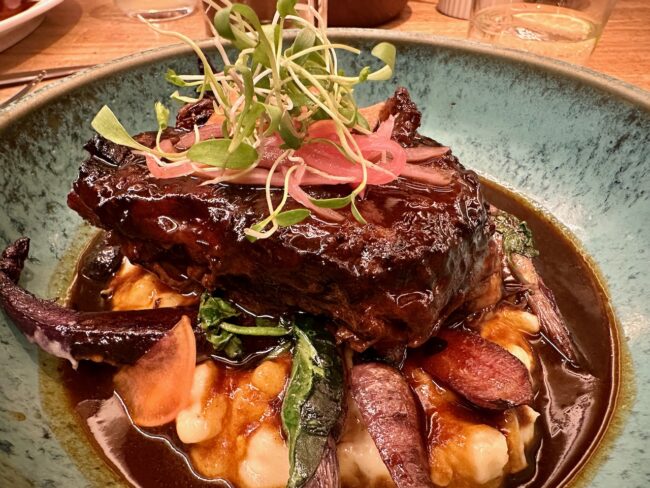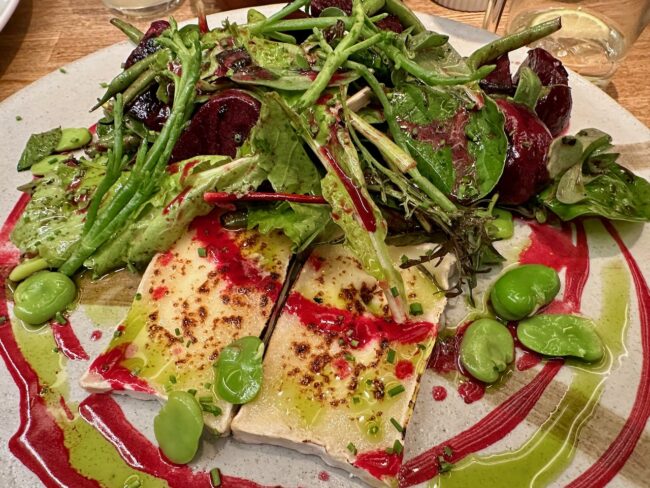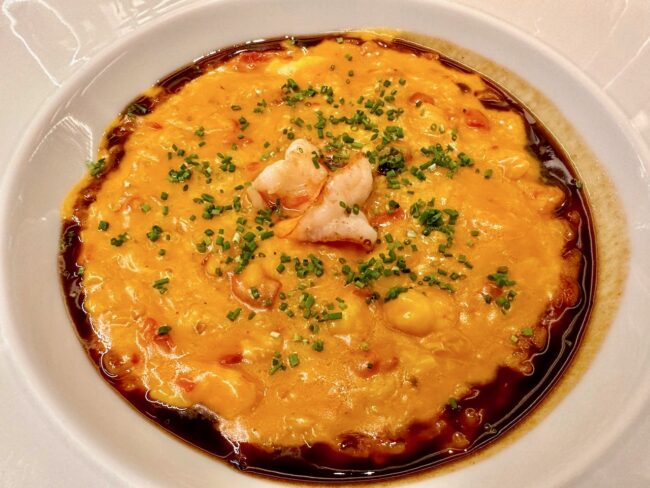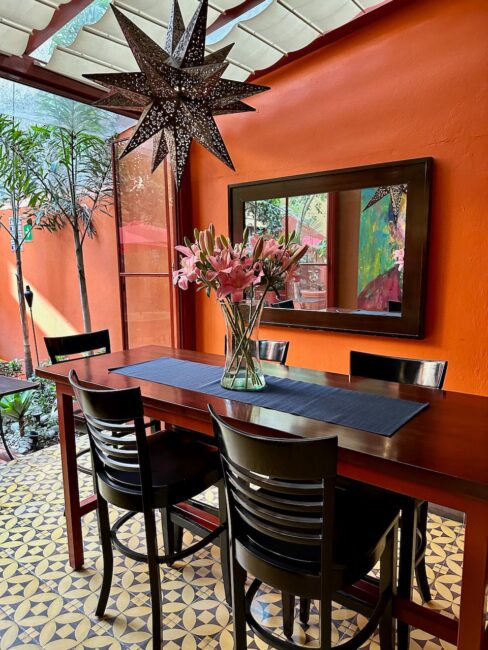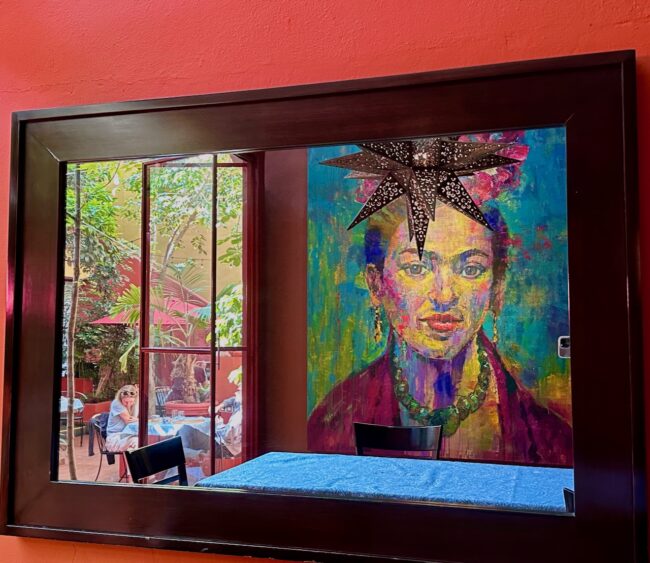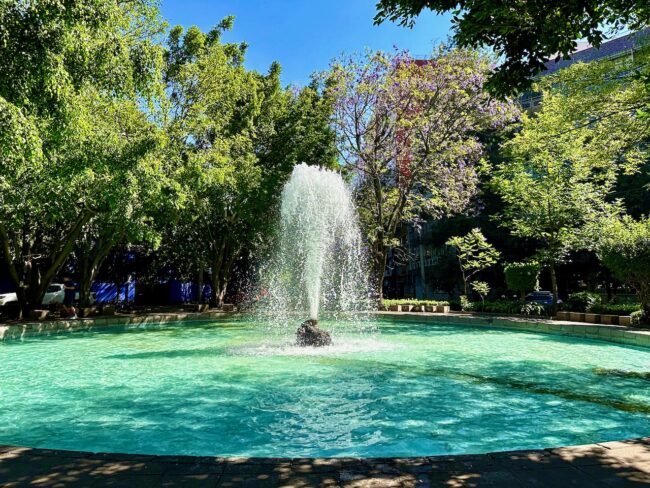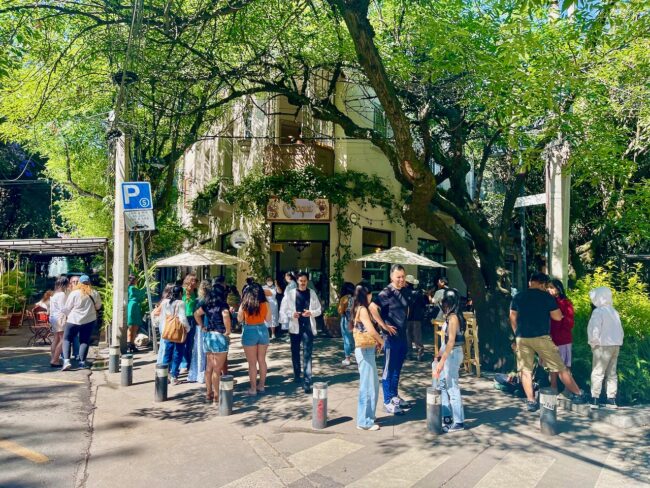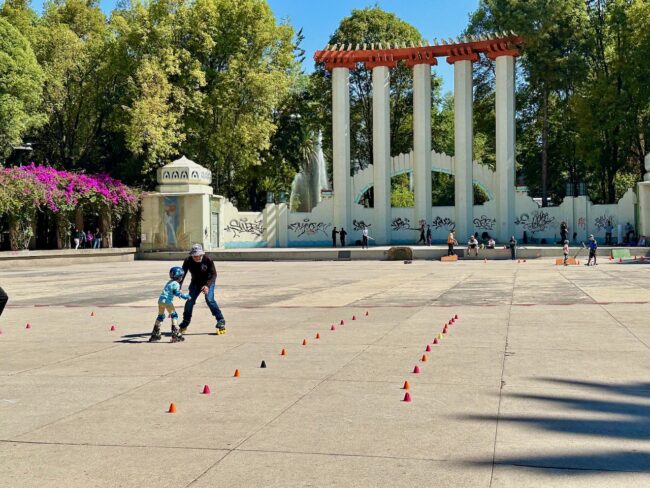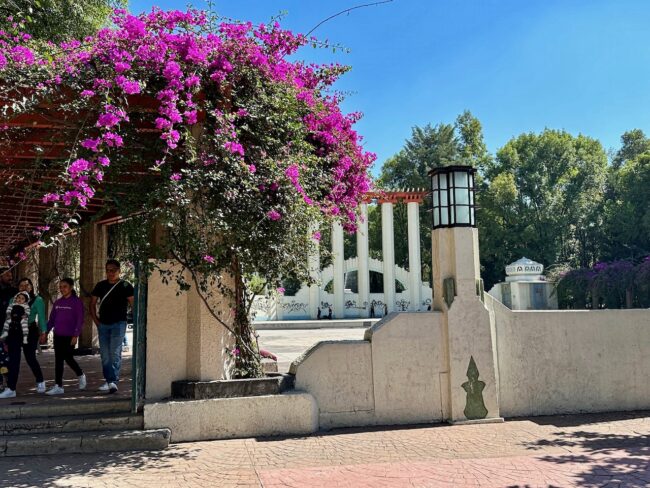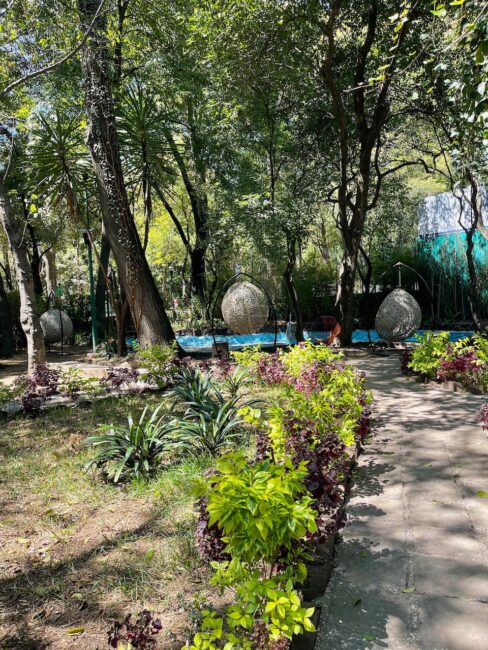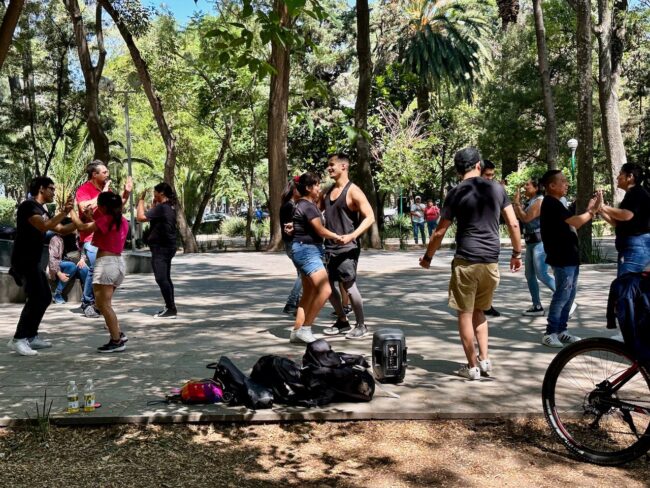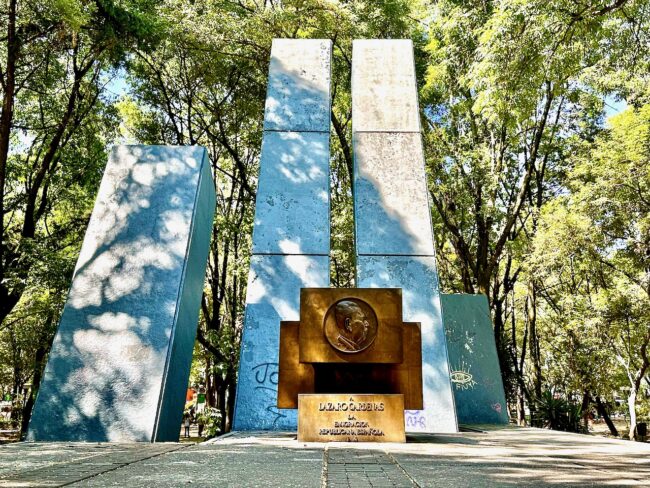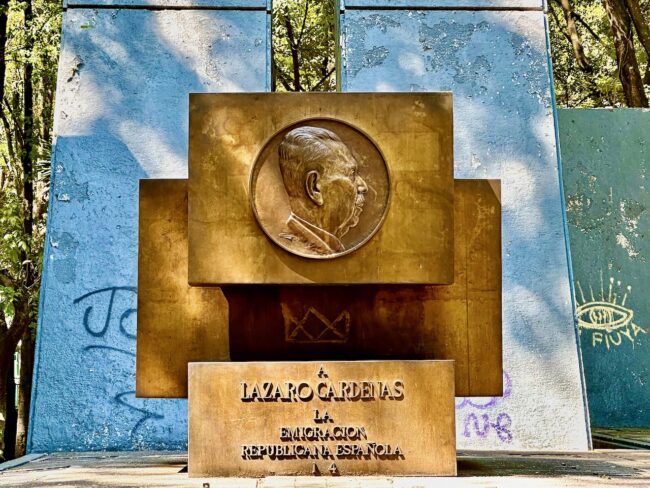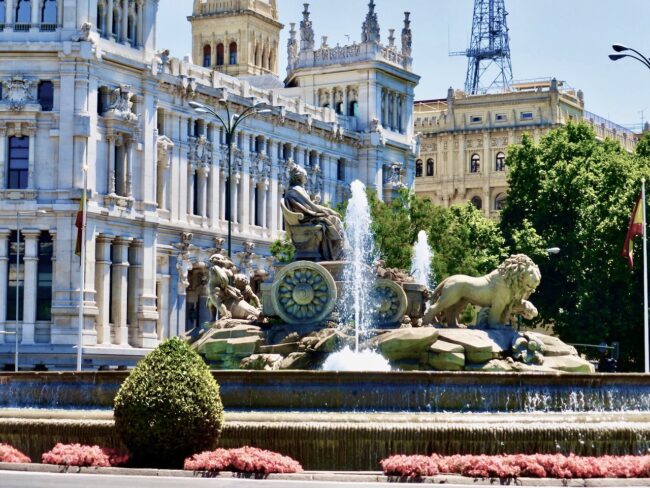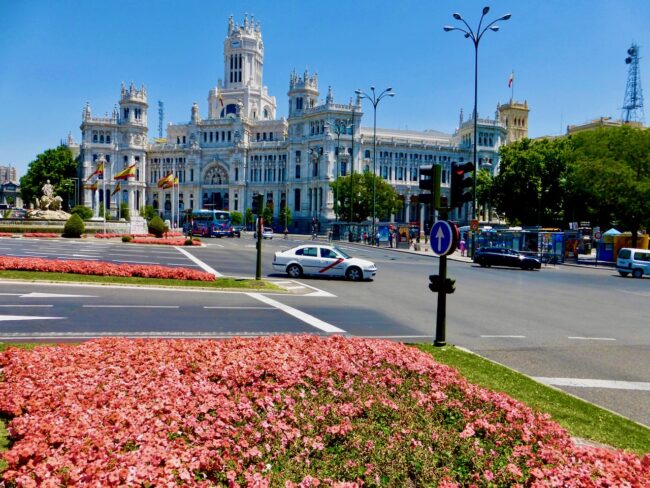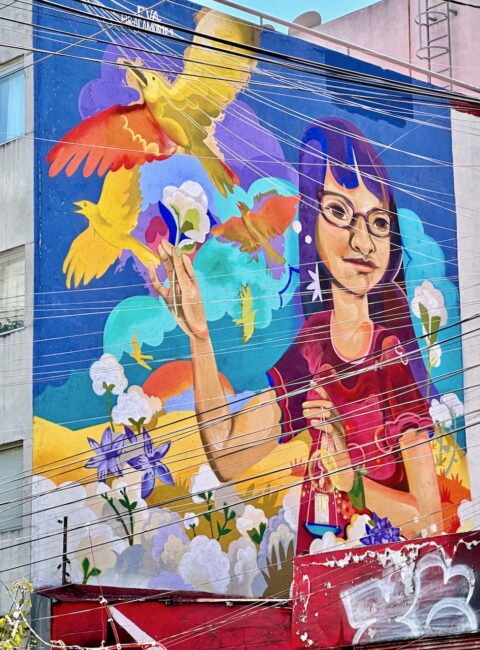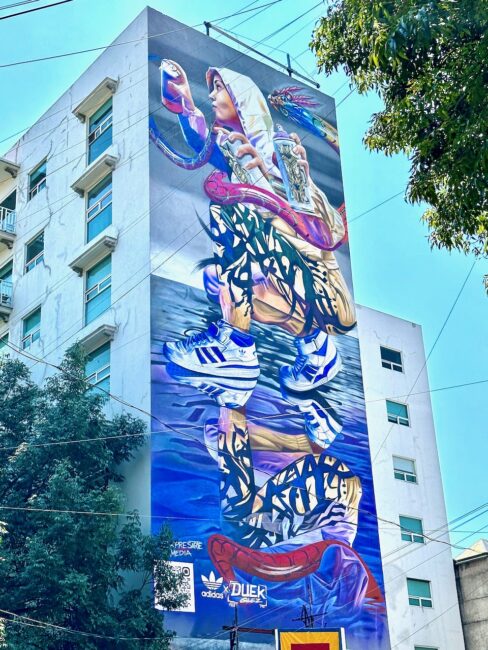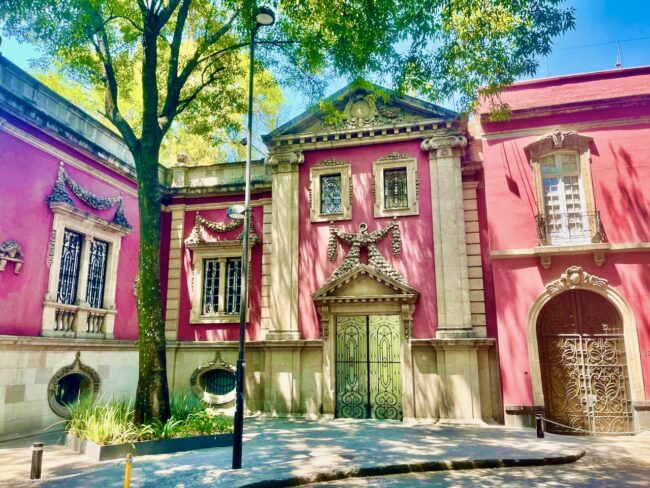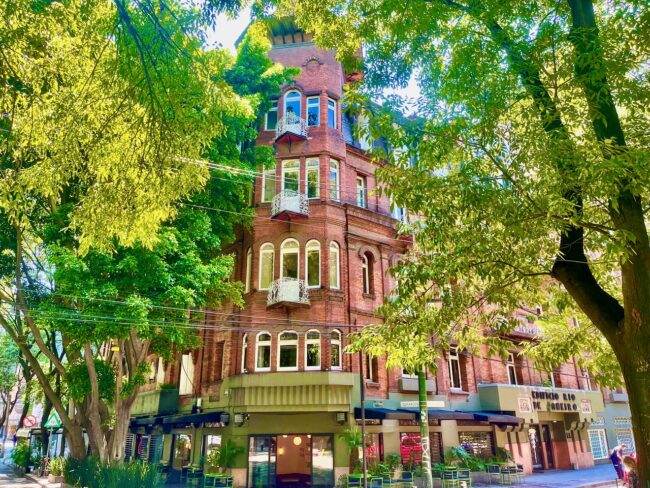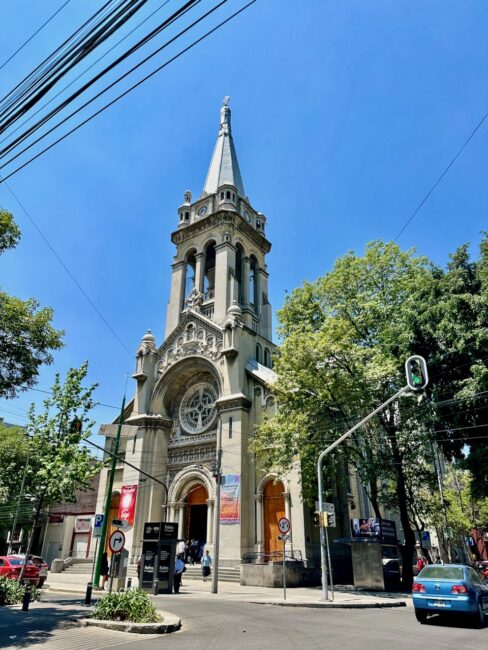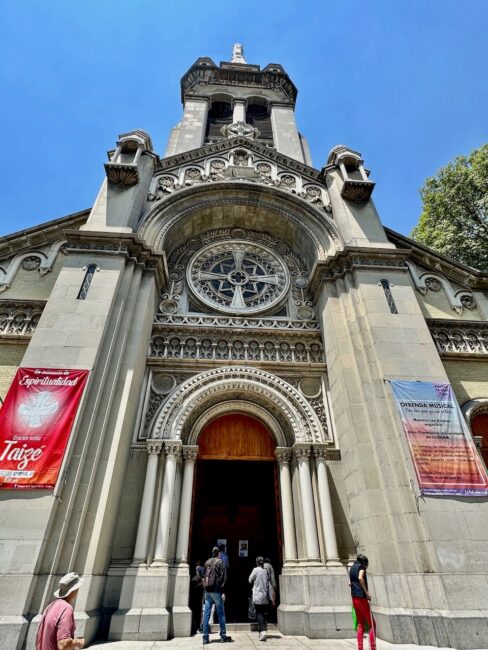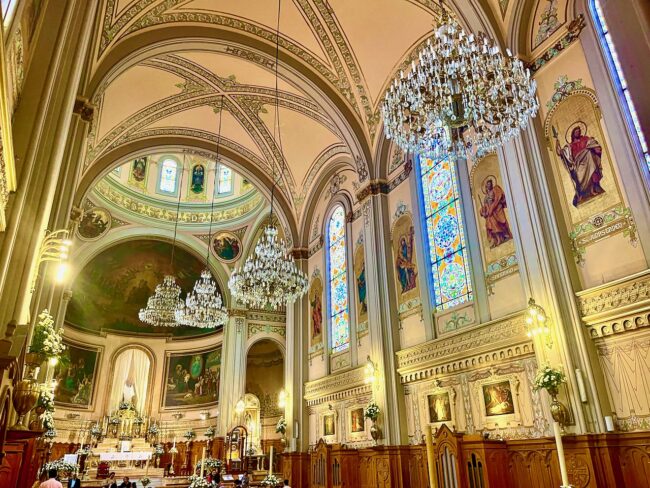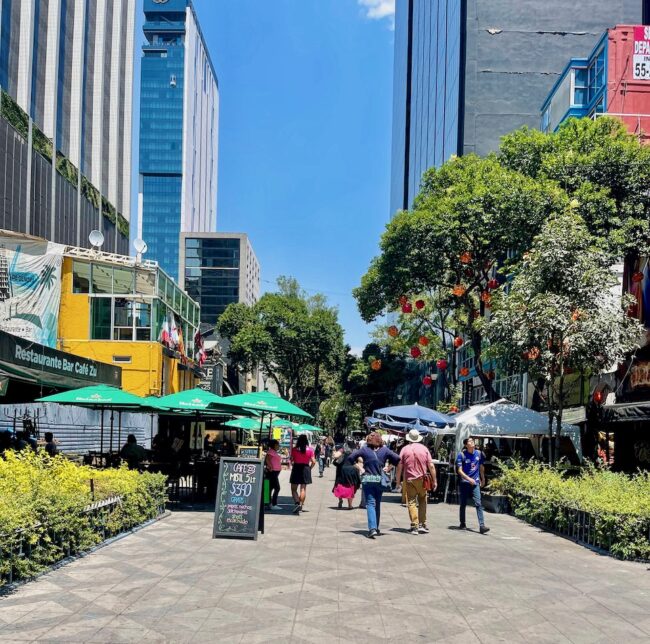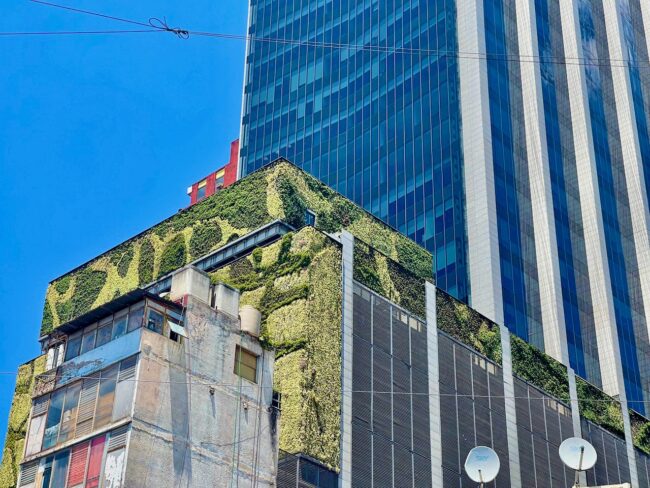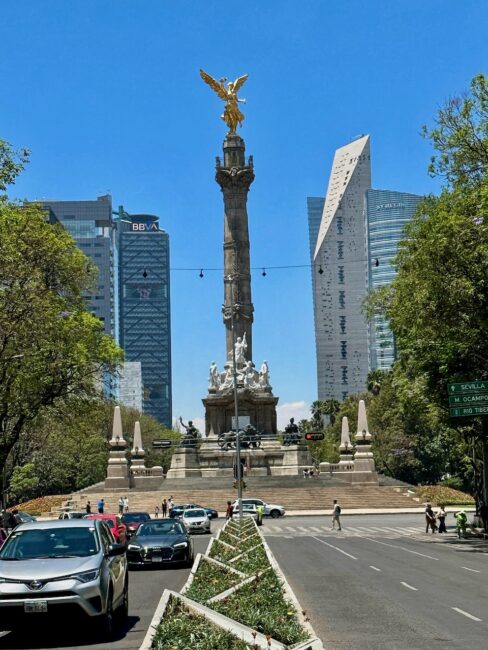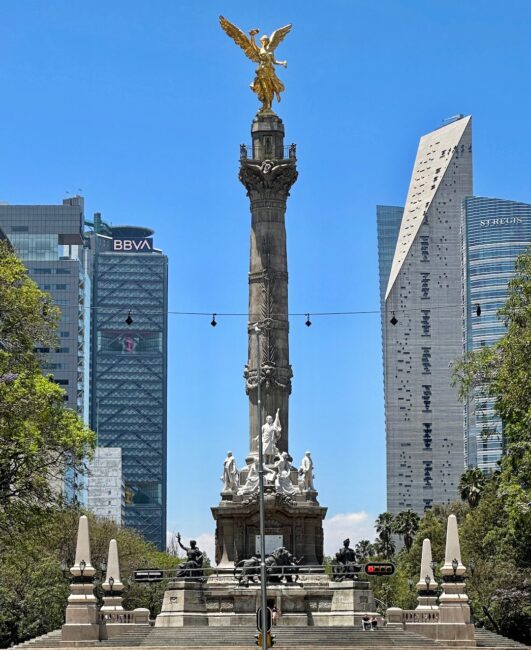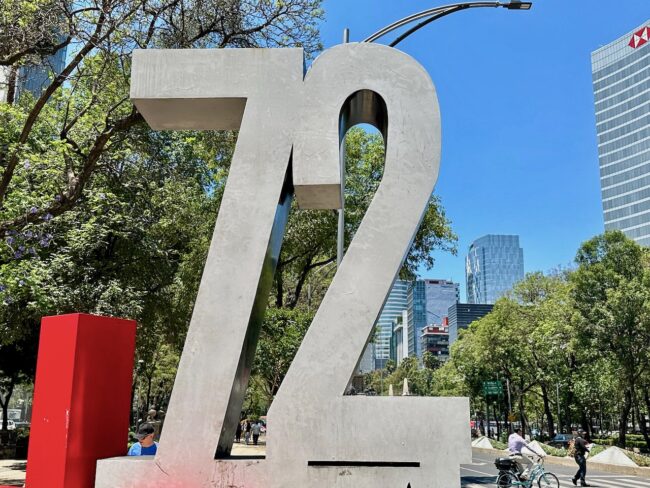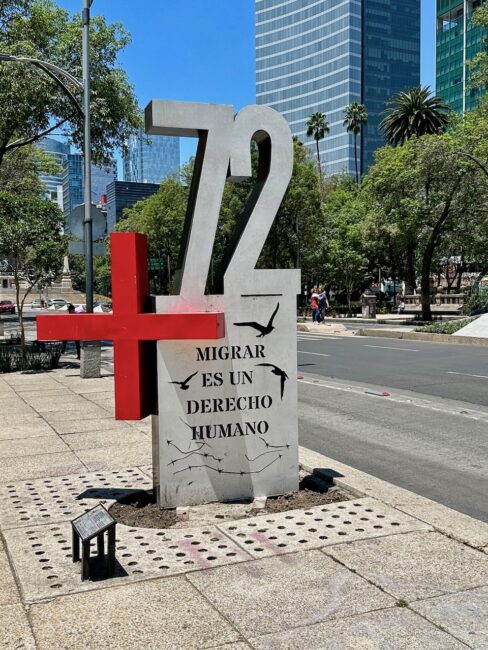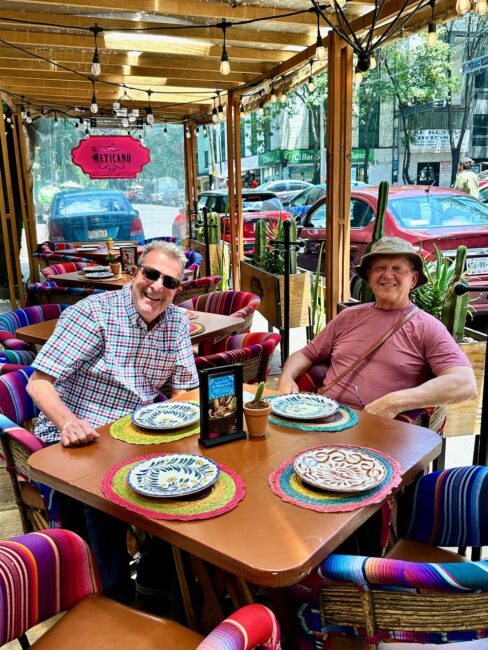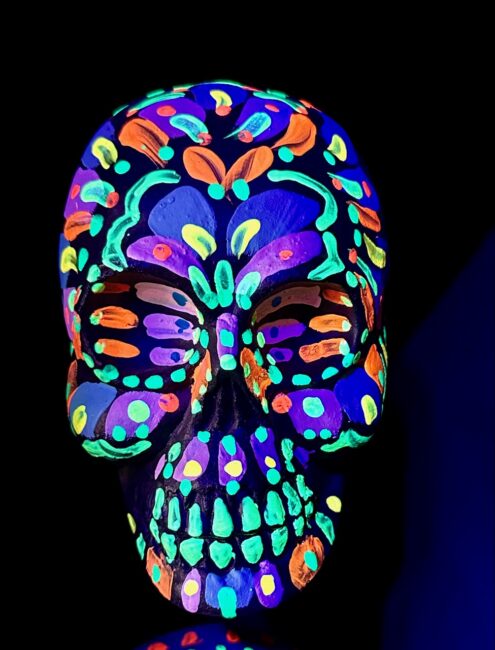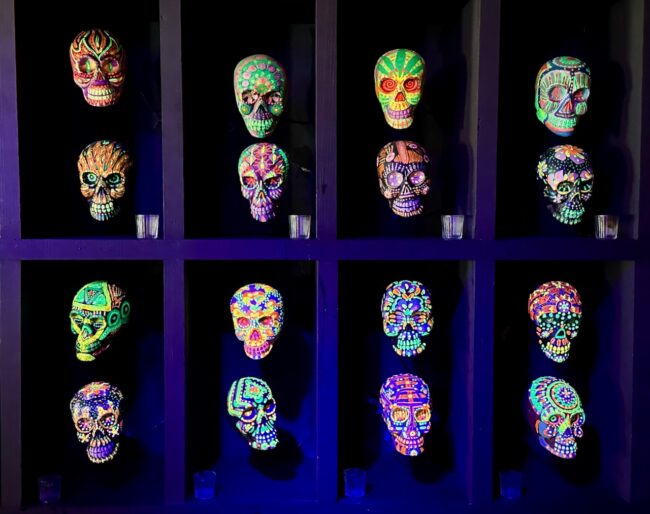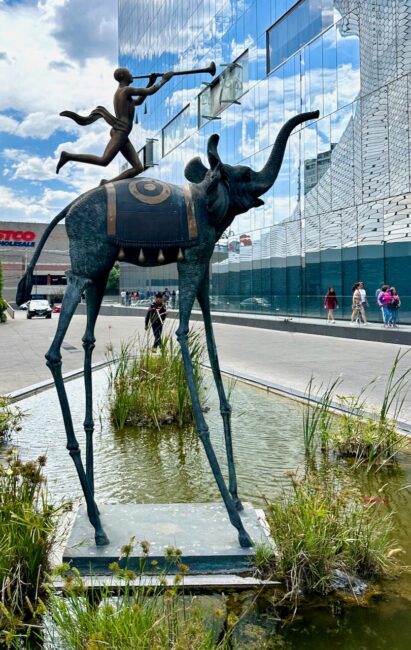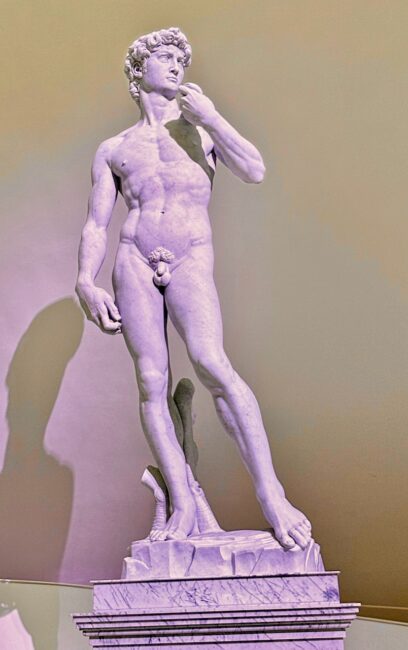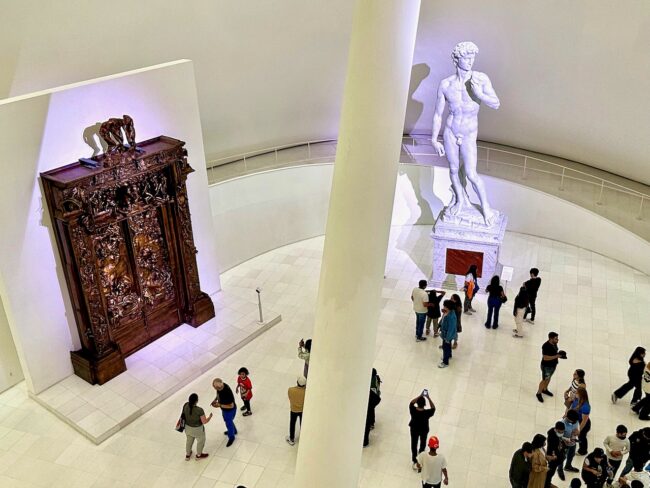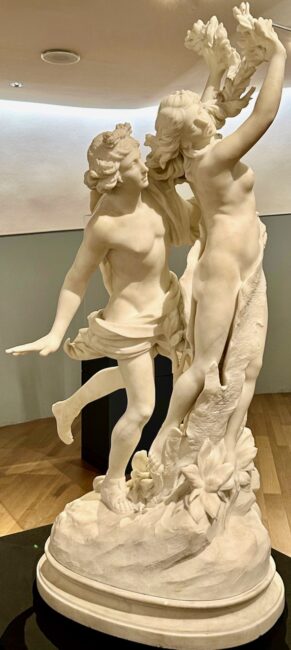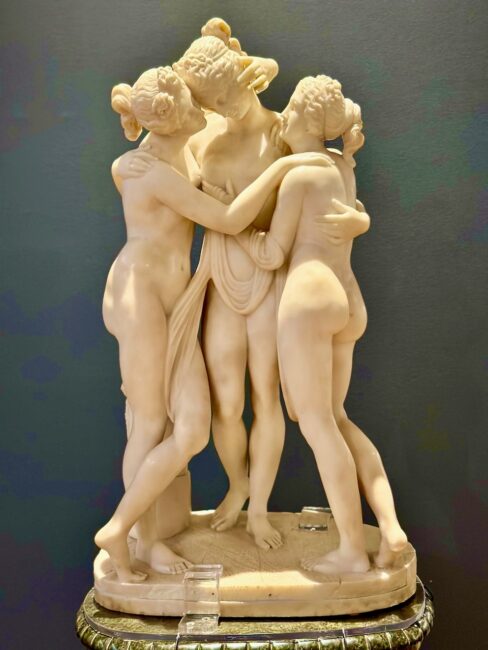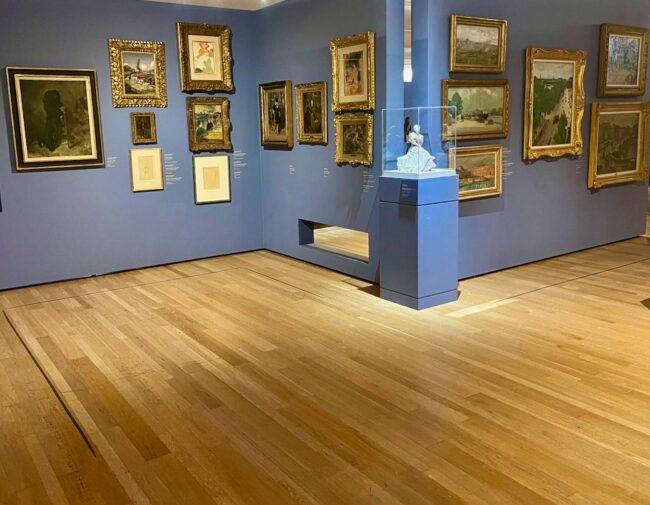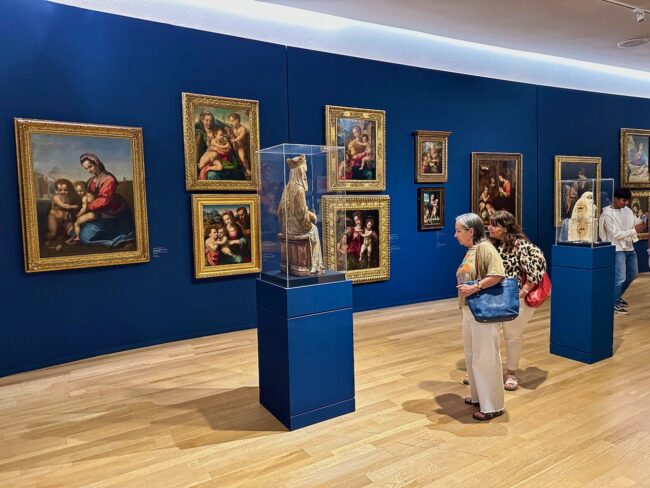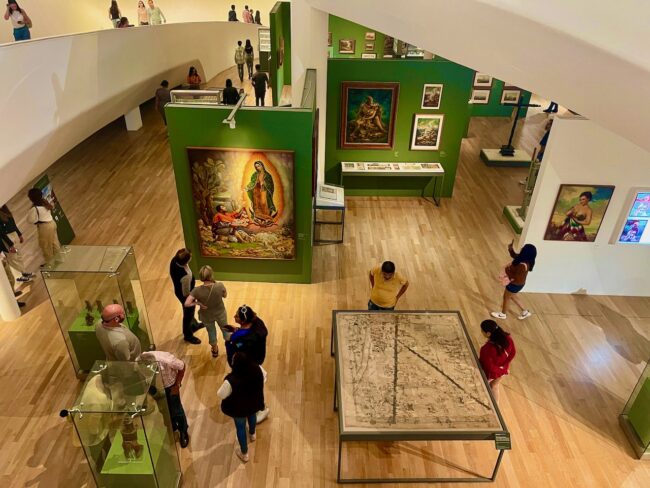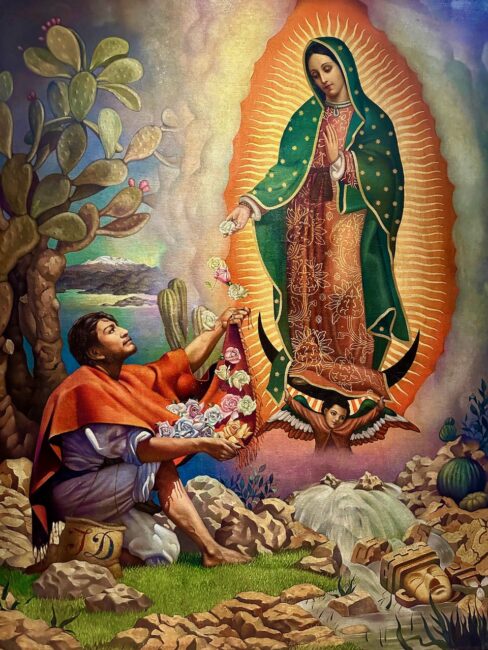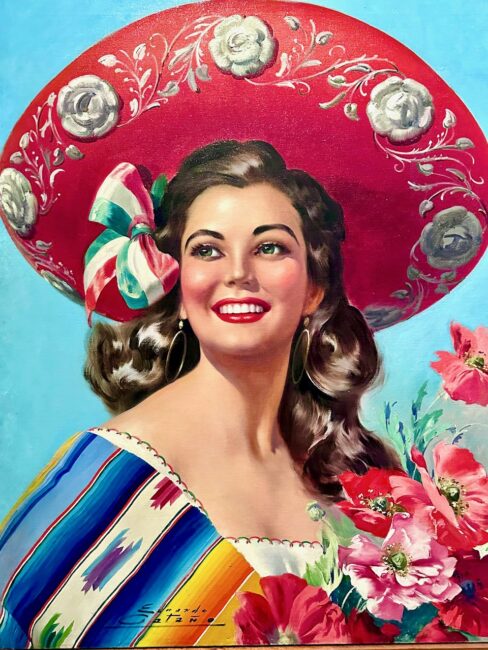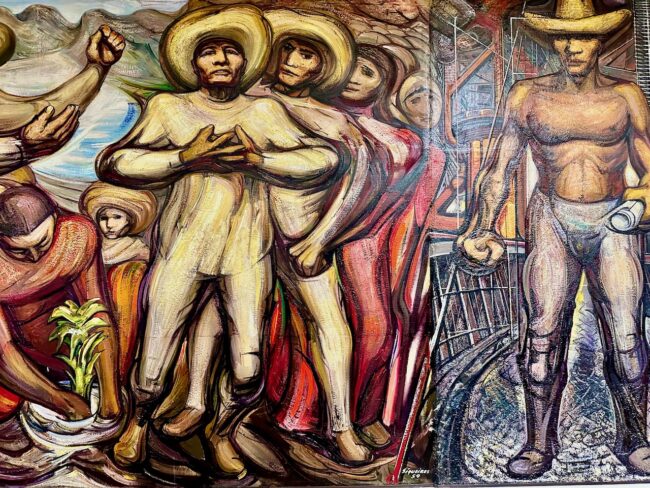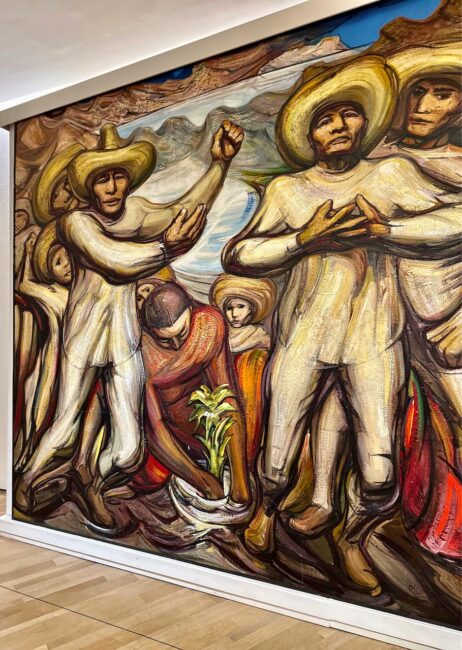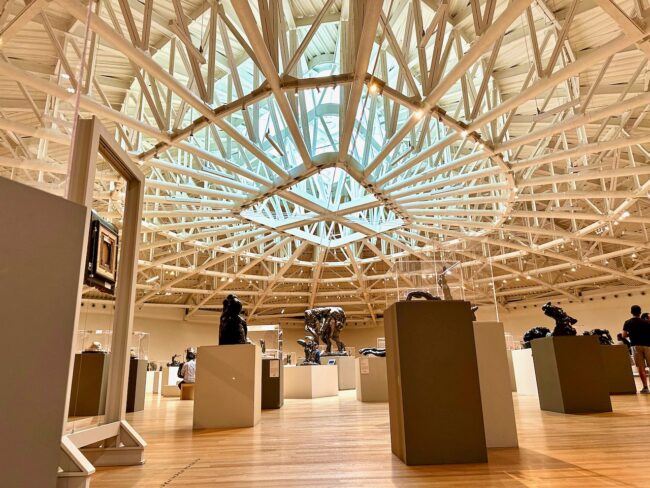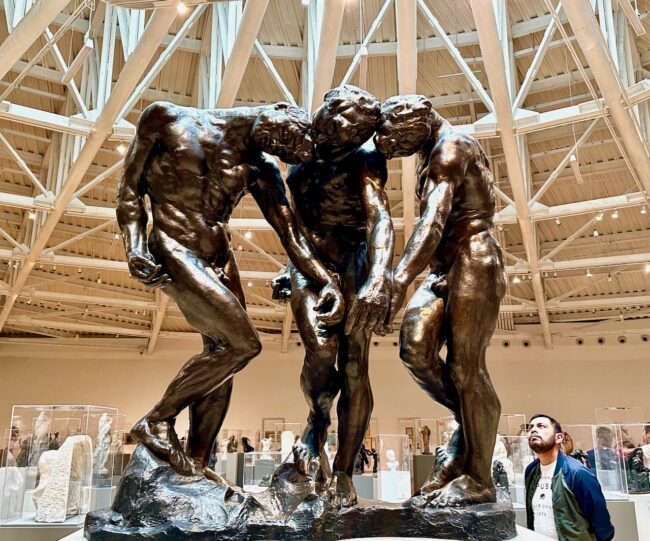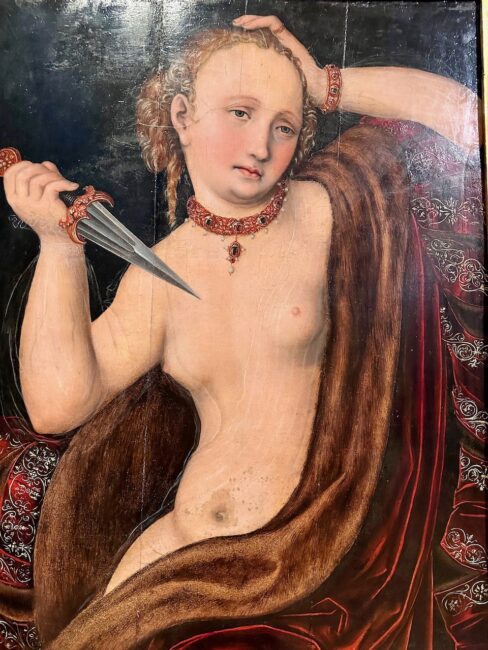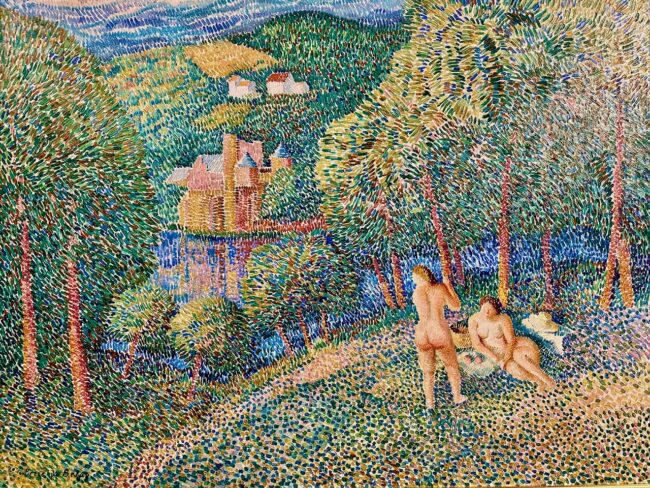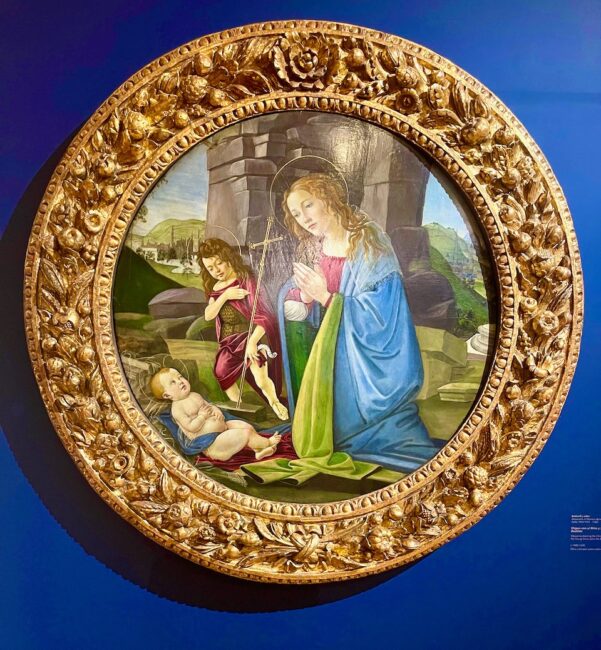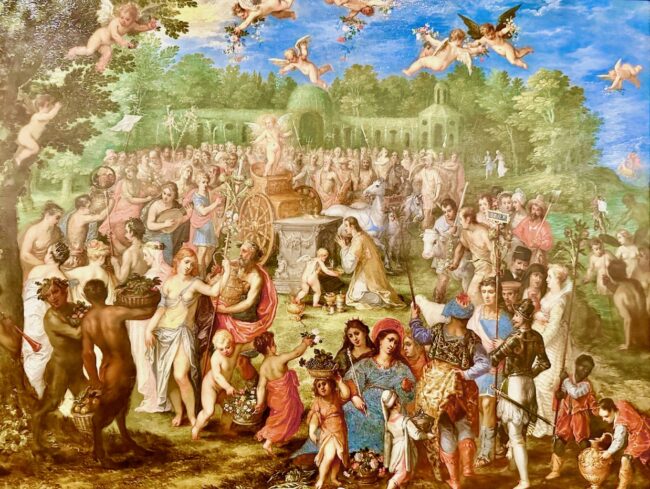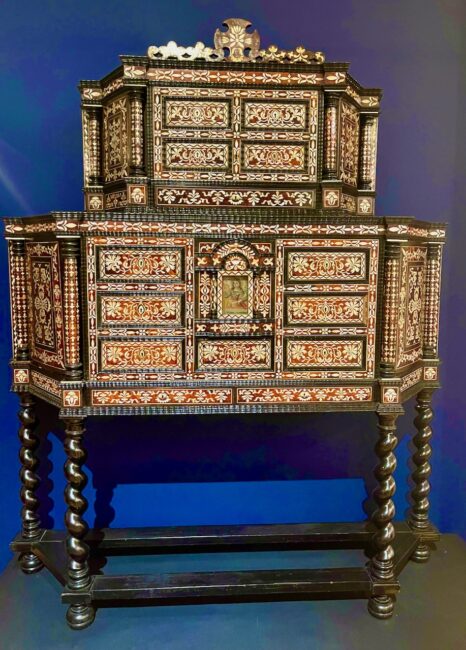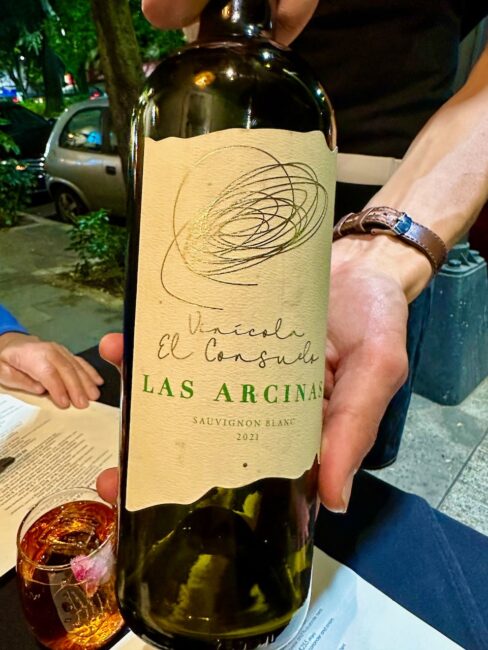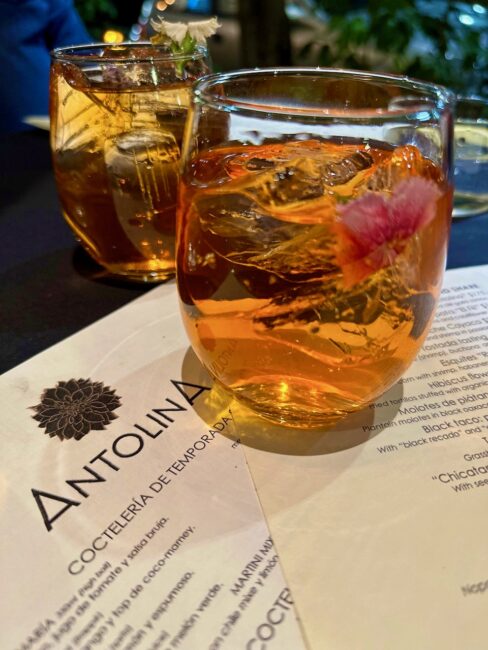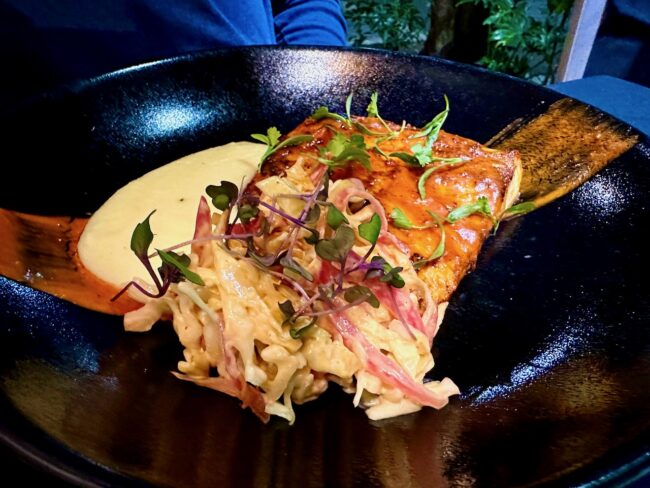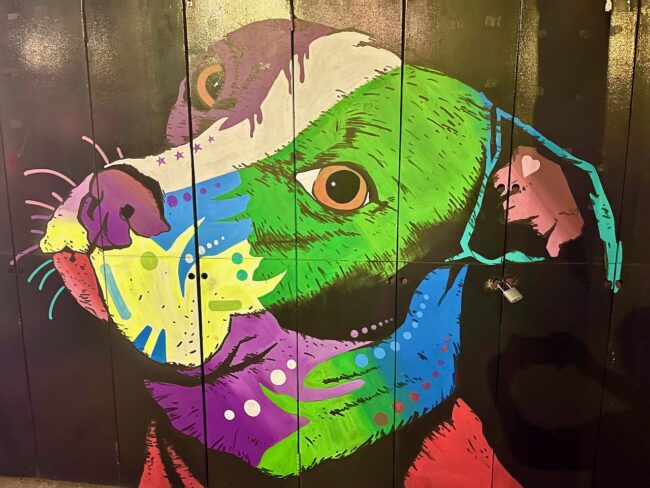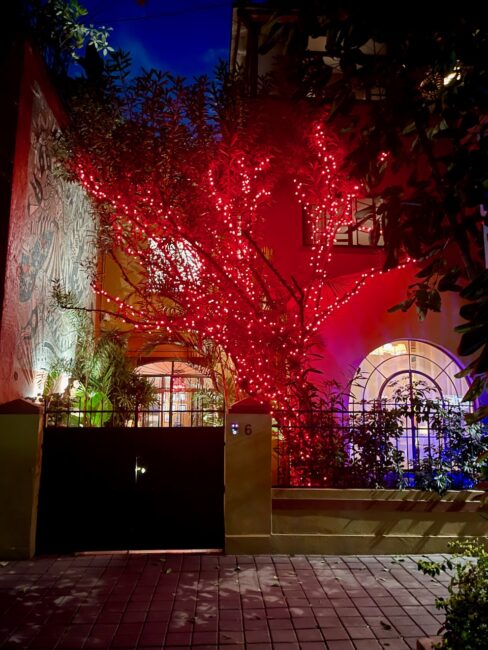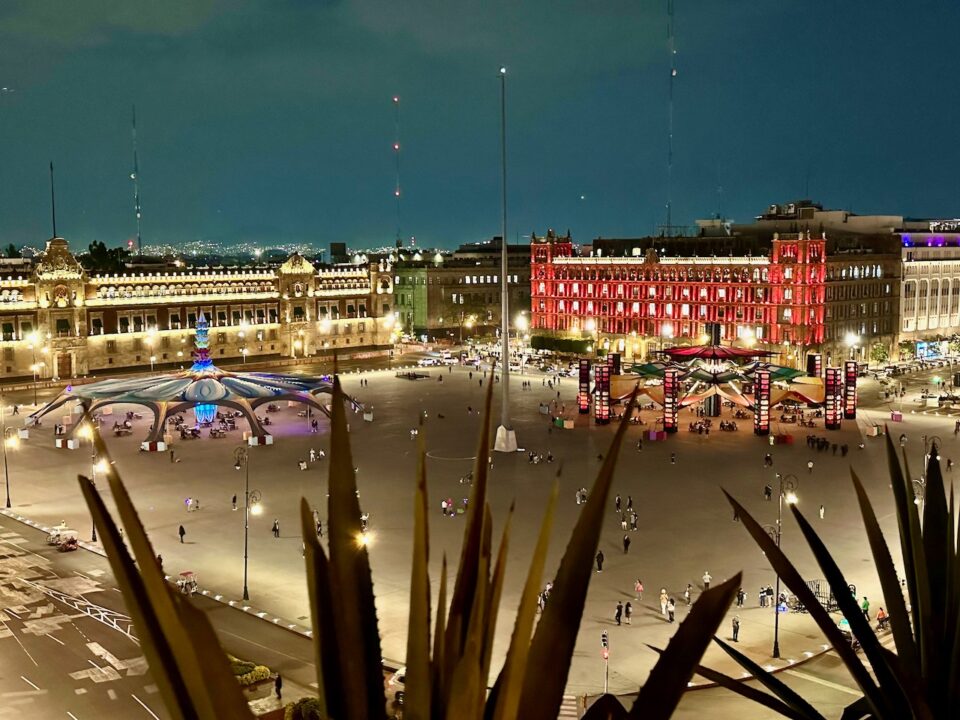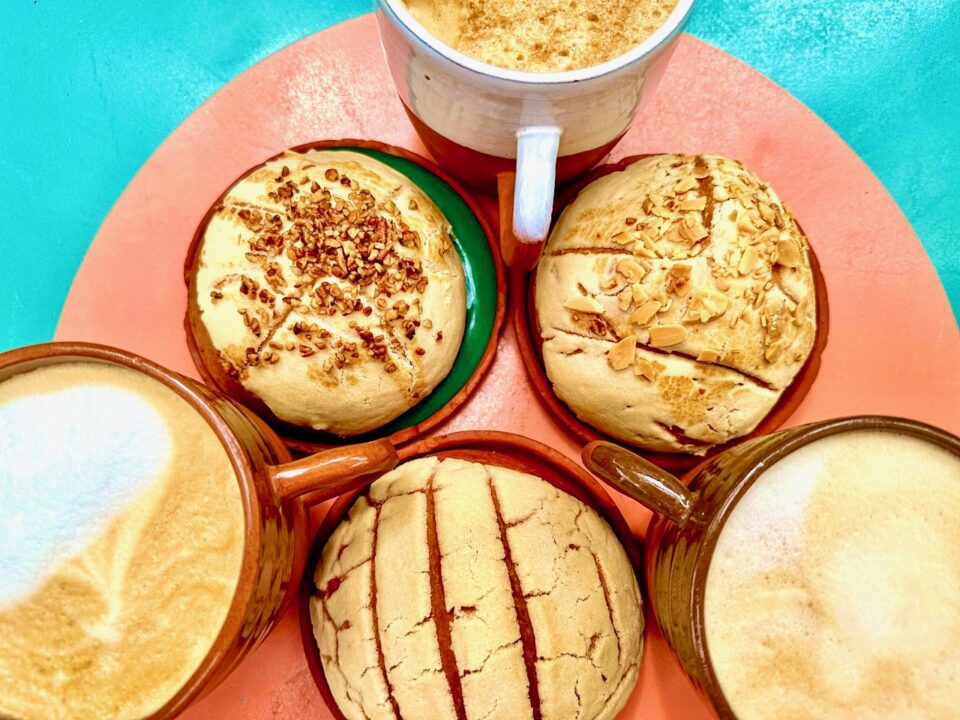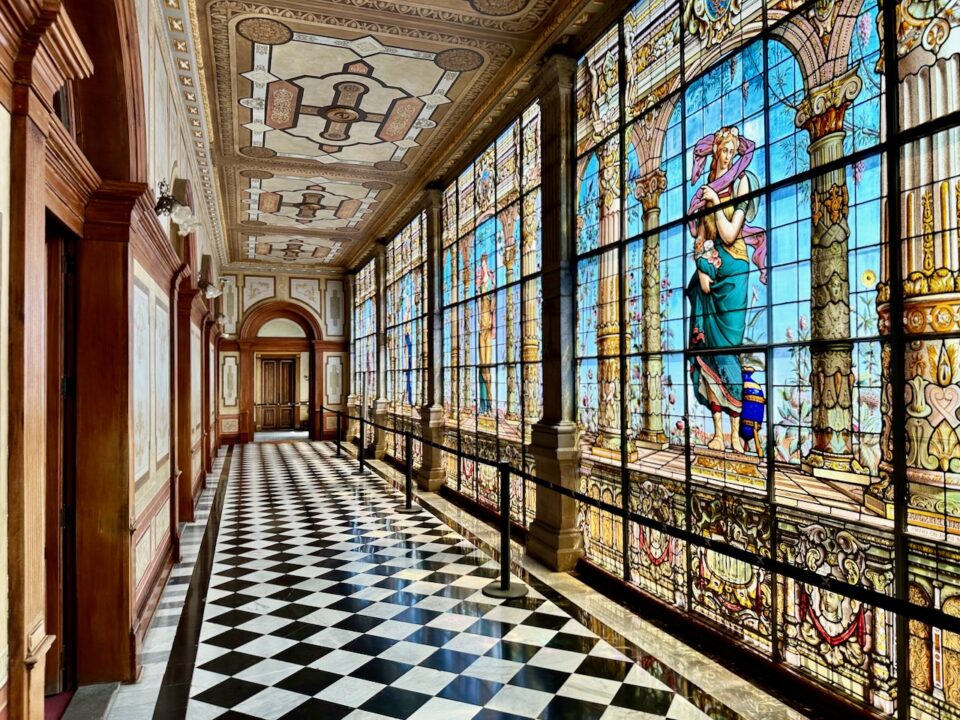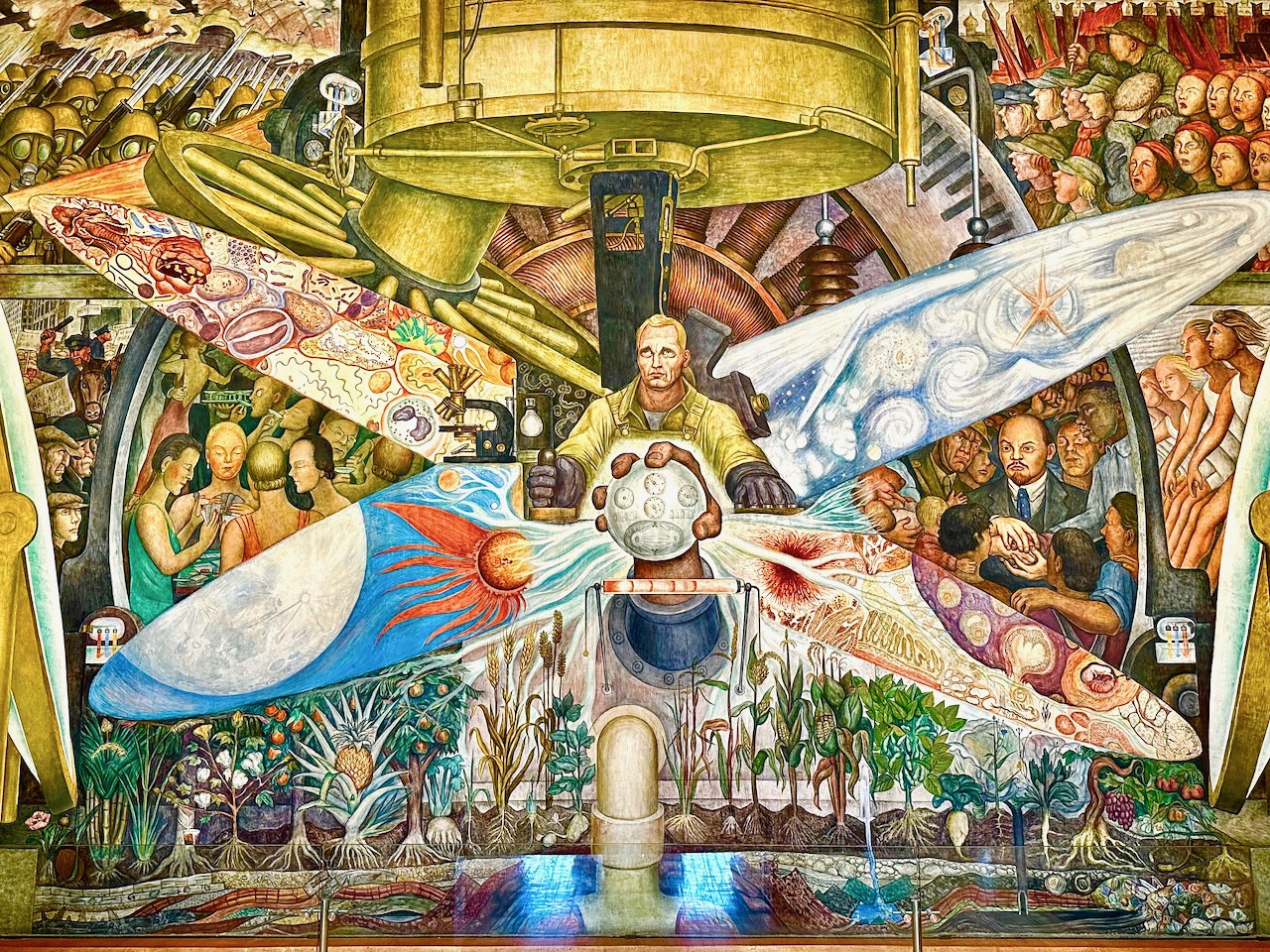
Chapter Three: Exploring Centro Histórico & Los Tres Grandes
May 31, 2023Historical & Hip: Mai Tai Tomás Travels To Mexico City
Prologue:
“You’re going to Mexico City? Aren’t you worried?” This was the response from many when I told them of our plans to travel to North America’s largest city for nine days. Let me begin by dispelling the notion that you are in danger in Ciudad de México. For us, Mexico’s capital city was nothing less than an immense joy to visit, and at no time did we feel anything but safe. The people were fantastic, the food out of this world (from those poblano mole enchiladas to morning conchas) …
… and the upbeat vibrant feel of the city has made us already yearn to return to this dynamic megalopolos that is so culturally intriguing. We learned so much about the area’s past.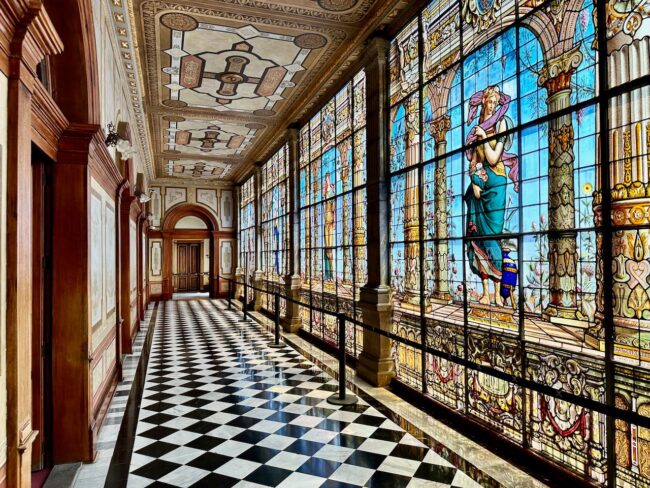
Oh, and all those gorgeous, historical and controversial murals? Maravilloso!
Kim and Mary did not join us on this trip to a city where the capital of the Aztec empire was once located. We did, however, have three Aztecs (of the San Diego State variety) included in our group of five. Aztec Tim (who was the second person I met at SDSU … Kim was the first) and his wife Sheila would join us for part of the nine-day adventure, while Aztec Stephen zigzagged across the city with us for the entirety of the trip. Obviously, he didn’t get the memo from Kim and Mary.
Tracy, Stephen and I stayed in three different locales for our nine days, while Tim and Sheila made Centro Histórico their permanent base for six days. Thanks to Uber and massive amounts of walking (and more walking), we were able to explore up close a number of Mexico City’s interesting and vibrant neighborhoods (both hip and historic), plus we also worked in a day trip to Teotihuacán, home to the Pyramid of the Moon, the Pyramid of the Sun and a scene of total embarrassment by yours truly. And yes, we did take time to sample an array of mezcal and tequila cocktails throughout the trip. I had originally planned a five-day visit, but after learning all there was to see, I realized we would need more time.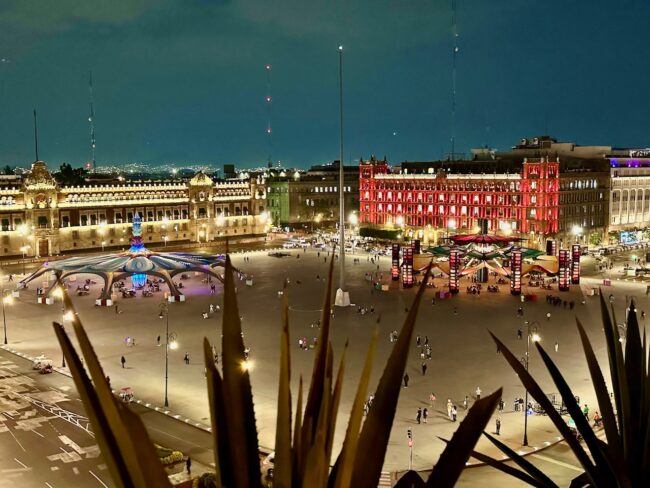
I also nearly made it through the entire vacation uninjured, but alas, that would not be the case. At least I waited until the final day. Let the fun begin!
Chapter One: Hola México!
Day One: Redress Works For Tracy, That’s The Ticket, Staying In A Tree House, Our Friend Has No Reservations, Scoping Out The Hood, “Late” Lunch, Now This Is A Happy Hour, Tom’s Inner GPS Goes Awry and Memorable Merotoro
On the road at 4:30 a.m. we arrived at LAX 2 1/2 hours before our flight. The big question would be, “Will Tracy once again be mistaken as a terrorist and yanked out of line?” or “Will the redress number she recently applied for and received take her off whatever list she’s been on for the better part of the last decade?”
Drumroll please … she went through the TSA pre-check with flying colors. The same could not be said for her husband. My new knee once again set off alarms. Tracy asked the TSA agent whether we could get a doctor’s note for future flights, and the answer was “Nada.”
The flight from LAX to Mexico City was three hours and fifty minutes. As usual, American Airlines lived down to expectations. The only form of sustenance on our flight was one (small) cookie. In addition, no water was ever offered. For those wanting to lose a few pounds, I suggest flying American.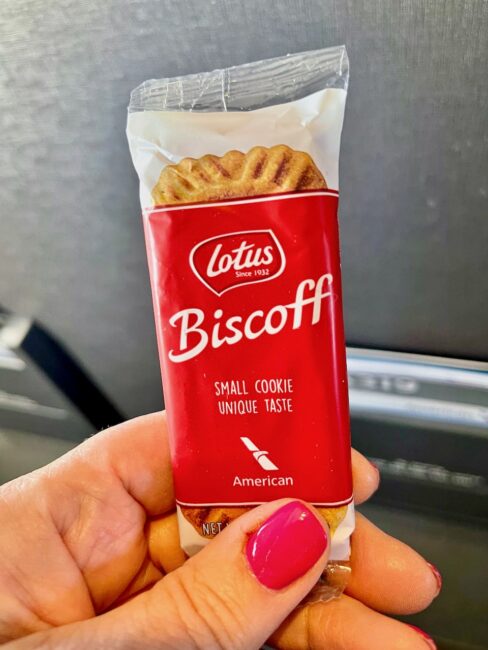
Getting through the automated border control in Mexico City was a snap. If you’re Mexican, American or Canadian, all you have to do is scan your passport, have your photo taken and it’s hasta la vista, baby! You are through. 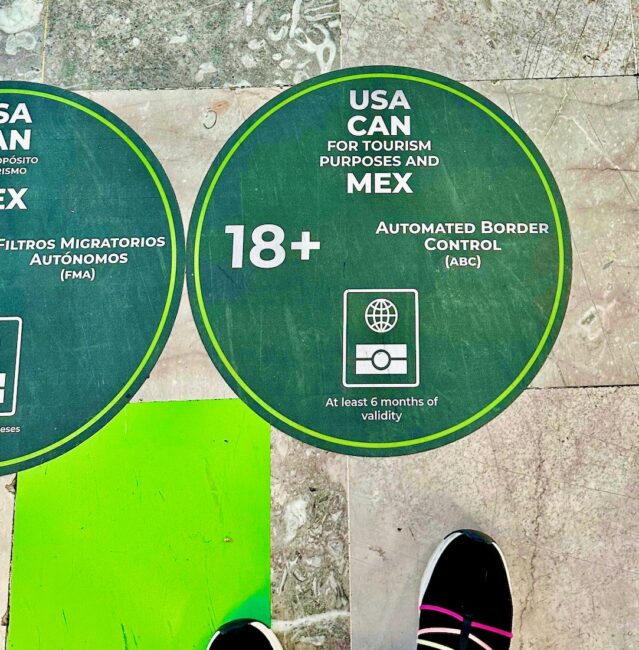
Well, almost through. I probably should have watched other people first, because when I attempted to exit, the doors would not open. Finally, Tracy, who had been in another exit, came over and looking at me like I was an idiot (that didn’t take long), told me to be still and let the machine take my photo. Shortly afterward, I was set free, and Tracy has the proof.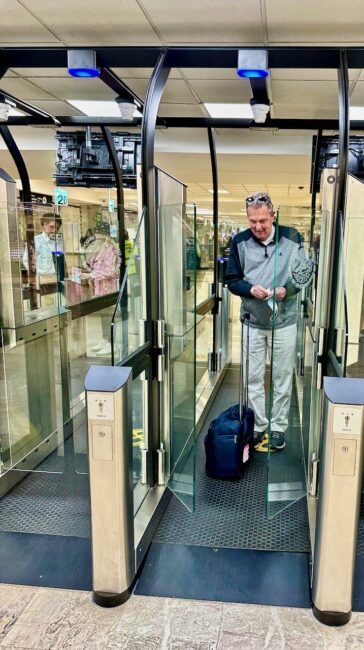
Tracy was handed a slip of paper by an agent, she crammed it in her purse (foreshadowing alert!) and that was that. After grabbing our luggage (30 minutes) it was time to catch a taxi. I had read that to get an “Authorized Taxi” you go to one of the taxi kiosks located inside the terminal and purchase a ticket to your destination (priced by zone). We randomly selected one of the companies, received our ticket, walked outside to the line and within five minutes we were whisking our way to our first lodging located in colorful Colonia Condesa.
Well, “whisking” might not be the correct word. Traffic, as we were to find out, is brutal in Mexico City. Although slow, the trip to the La Condesa neighborhood (which is located in the borough of Cuauhtémoc) was very enlightening. Lining the sides of the road were dozens of various types of vendors. Some were cooking food (those tacos and other dishes looked so appetizing to a guy who’d only had two cookies), while others were selling various goods.
In about 30 minutes, we were deposited at our b&b for the first two nights, The Red Tree House, a place that had garnered stellar reviews … and for good reason. We were met by our genial host (everyone that works here is terrific).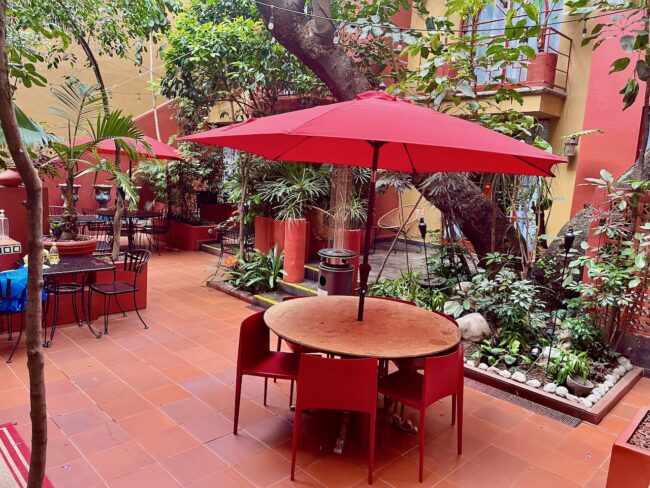
He asked how the taxi drive was, and I answered that the traffic here reminded me of Los Angeles. He smiled and quipped, “Yes, but Los Angeles has more Mexicans.” Then came a quick moment of panic. We alerted him that our friend Stephen would not be arriving until around seven, and if that was going to be a problem. Our host looked through his reservations, but Stephen’s name was not on the list. We immediately called him just as he was boarding his flight to tell him he didn’t have a reservation. He said he knew that, and that he actually had reserved somewhere else in Condesa when he was too late to get reservations at The Red Tree House. Not to worry, he would meet us at the restaurant.
Then our host introduced us to the two Red Tree House dogs, Boss and Romeo. I asked, “Who’s the Boss and wherefore art thou Romeo?” I think our host now wished we didn’t have reservations either. The Red Tree House contains interesting artwork throughout, plus a nice patio where guests enjoy a free breakfast and happy hour.
Now we knew why so many people had raved about this place. It felt like home … only cleaner.
It was time to explore a little of Condesa and grab some lunch. Around the corner from The Red Tree House is the beautiful tree-lined Avenida Amsterdam …
… an oval that includes lots of cafes and some very striking architecture. We stopped at the nearby fountain for photos, but decided that since we were going to stroll Avenida Amsterdam the following day, we’d go see where the next evening’s restaurant was located. I was a little worried about my choice, so I wanted to take a look.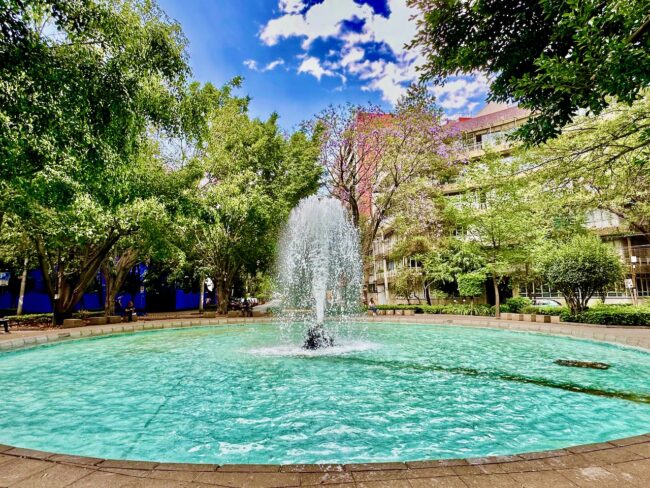
We walked past more gorgeous buildings and shortly we were at Antolina Condesa. The menu looked great, and we made sure to reserve a table on the sidewalk for the following evening.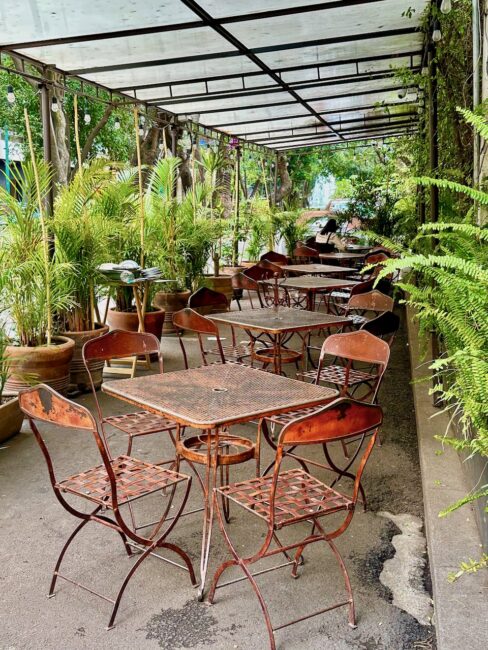
Nearby was Café Toscano. Who knew our first meal in Mexico City would be Italian? It was nearing 3 p.m., but there were lots of people eating. We would find out that lunch in Mexico City often doesn’t start until 2 p.m. I had some delicious Carpaccio, and the Bohemia tasted great on a warm afternoon. Tracy enjoyed her smoked eggplant with crostini.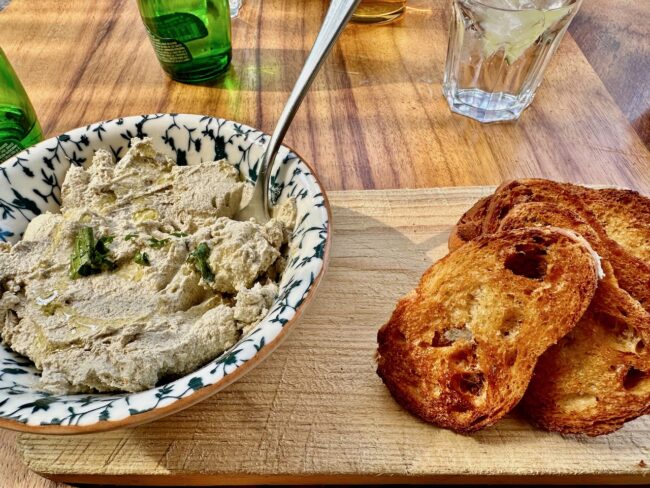
We headed back to rest for a short time as Tracy had a slight headache, which we surmised could be from the elevation. Mexico City is more than 7,300 feet above sea level. Take that Denver! Before entering we saw some of the cool outdoor artwork that would be a constant on this trip.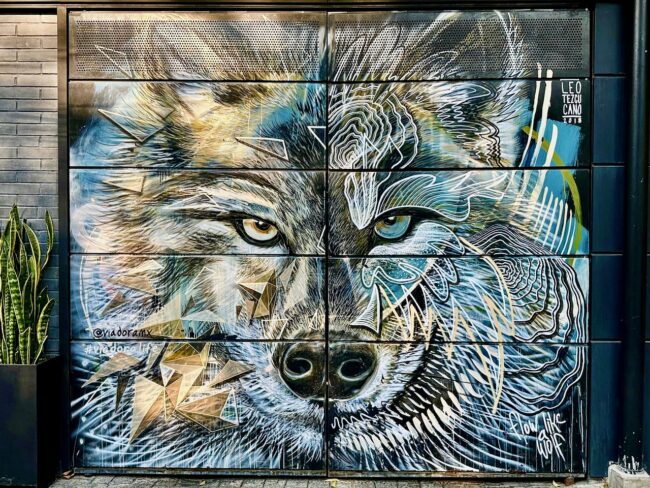
Every evening between 6 pm and 8 pm, The Red Tree House offers a Happy Hour for its guests, and they know how to do it. In our experience, many of these hotel happy hours have small pours, and you have to go out of your way to find refills. Not here. Our host poured us two large glasses of wine, and he kept coming around offering refills while chatting with the guests. We loved the indoor/outdoor space, as did many of the guests who partook in this happy hour.
A little after 7 o’clock we headed back out on Avenida Amsterdam in search of Merotoro, Cocina de Baja California, which had been a recommended restaurant (we had 7:30 reservations). Our host said it was only about a five-minute walk. Luckily we left a little early, because even though I believed I knew where it was (our host had given me directions), there’s always a chance I’ll screw up. And screw up I did. This cat seemed to be trying to warn me that we might be headed in the wrong direction.
Avenida Amsterdam takes its elliptical shape from a race track (Hipódromo) that was located here in the early 20th century. This part of the neighborhood is referred to as “the heart of La Condesa.” After about ten minutes Tracy said, “I thought Merotoro was only five minutes away.” Not surprisingly, I had somehow taken us in the wrong direction. Tracy had once again backed the wrong horse. Finally, after I got us all turned around, Tracy took charge and we arrived at the restaurant just in time for our reservation.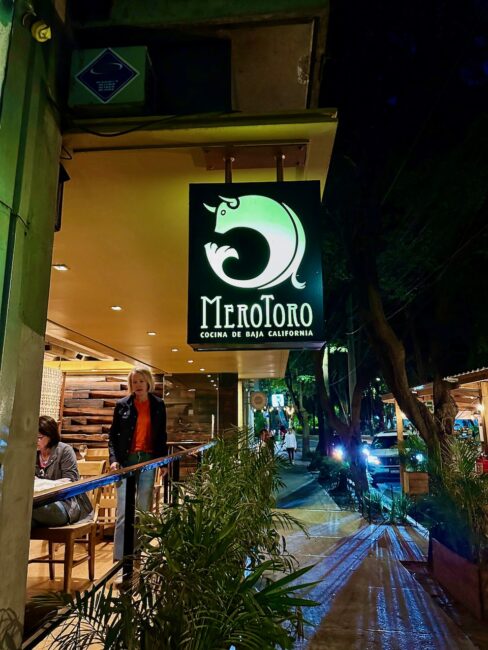
Merotoro (Avenida Amsterdam 204 between Iztacihuatl & Chilpancingo) is an upscale restaurant, but it doesn’t have that snooty vibe that so many similar-type restaurants seem to have. The dining room opens out to a patio, and the ambiance is perfect for great dining.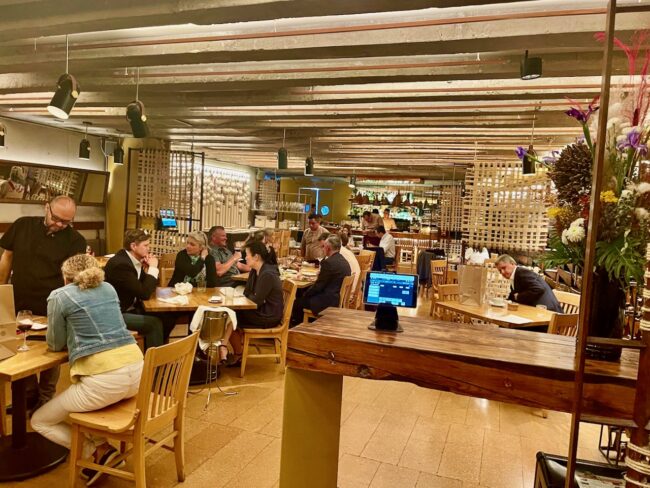
Chef Jair Tellez previously had a restaurant in Baja California and Merotoro’s cuisine mirrors its owners roots and brings those Baja flavors to this restaurant. Our server was terrific and apologized for not speaking English well. We told him not to worry and we apologized for our pathetic Spanish. It all worked. I had been in Mexico City for nearly six hours and not tried any tequila. That fact was rectified rapidly when I ordered the spectacular Tequila Zo Coctele; tequila, Chartreuse, amarillo limón y jugo de mango. Fantástico! Tracy tasted two wines from Valle de Guadalupe (a future trip) before settling on the Sauvignon Blanc.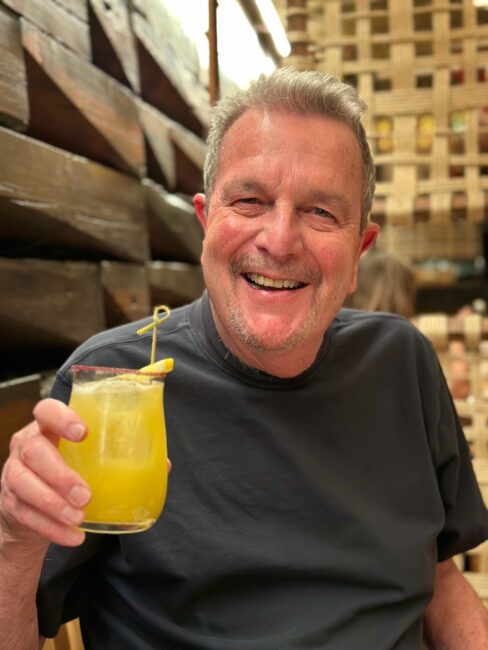
The house-made crusty bread served with olio and sea salt was a great start, as were the blue tortillas with spicy hot salsa. By now Stephen had joined us and also joined me with that wonderful tequila cocktail.
The meal was stellar. I had really wanted to start with the beef tartare with grasshoppers, but since I had carpaccio for lunch, and my entree was beef tenderloin, I prudently ordered the pumpkin soup with crabmeat, basil and pumpkin seed oil. The beef tenderloin with salt potatoes and roasted carrots rounded out an excellent meal.
Tracy started with Gazpacho with Spider Crab meat, and followed that with a braised short rib with creamy corn and grilled carrots.
Stephen opted for a grilled beet salad, broad beans, lettuce and sheep cheese. His entree of creamy rice with shrimp, pumpkin and sea urchin was also very good.
It was a great meal to begin the trip, although we were all too full to sample one of their desserts. I hate when that happens.
After a day of travel we settled into our respective b&bs after deciding we’d meet at the Einstein statue in Parque de Mexico the following morning. We would then traverse Condesa and its two parks with numerous four-legged friends, check out some interesting monuments and fountains and see a statue in Roma Norte that reminded us of our visit to an Italian city. We also ducked inside a church with a recognizable name, plus a monument and an anti-monument very near one another.
After lunch, we’d Uber over to Polanco and check out the huge museum created by a man who was once ranked as “the richest person in the world.” All this, plus a dinner that finally included chapulines made for a very, very fun and busy day.
Chapter Two: Checking Out A Few Mexico City Neighborhoods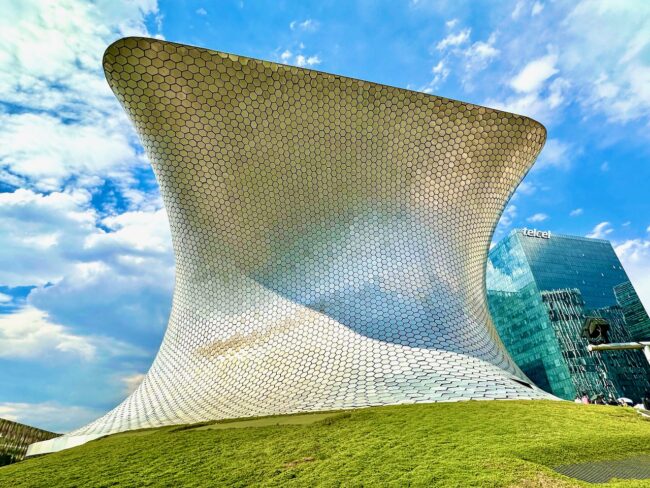
Day Two – We’re No Einstein, Taking Abreast Of A Statue, Going To The Dogs, Welcoming Hands, Not That Frida, Are We in Madrid?, Are We in Florence?, Witch House Is It?, A Familia-r Church, Independence Monument, Massacre Anti-Monument, Battle Of The Bohemias, Slim Chance To See His Museum, Rodin Overload and Patience … Grasshopper
One of the best things about being on vacation? There is no dieting thanks to all the walking we do. Even after a big dinner the previous night, I was happy to settle into The Red Tree House Dining Room for the complimentary breakfast. We enjoyed the artwork as we downed delicious red chilaquiles, yogurt, pastries and copious amounts of coffee.
It was now time to head toward where we would ostensibly meet Stephen at the statue of Albert Einstein. It was a beautiful morning as we skirted around the nearby fountain in Plaza Citlaltépetl and a very popular cafe.
Colonia Hipódromo in the Condesa district is Mexico City’s “hip” Colonia (neighborhood), and as usual, we brought that hip quotient down quite a bit. Parque México (officially Parque General San Martín) was developed in the 1920s on the location of the former horse racing track. Today, there weren’t any horse races, but there was a form of dog racing. Dog and their owners waited impatiently in line as one dog after another would get its exercise by sprinting along the walkway chasing after its owner. This Great Dane actually looked almost as big as a horse, and we learned she was only ten months old and still had some growing to do.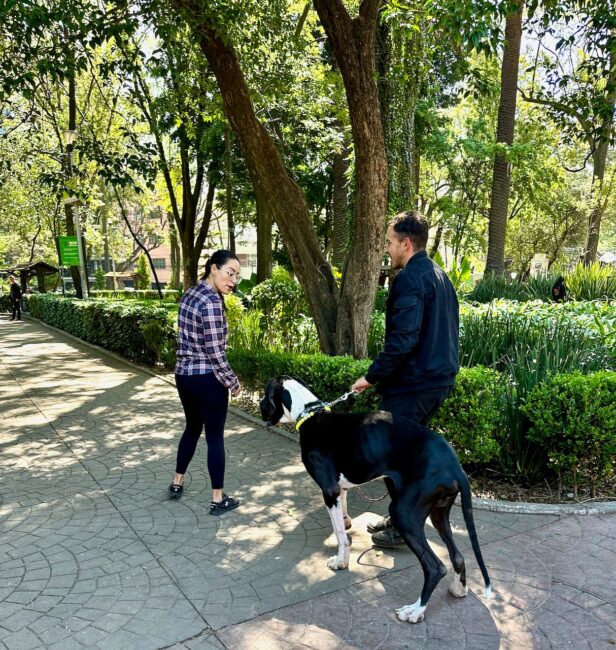
Dogs were everywhere, and this well-behaved pack was taking a rest before going to “Dog School.”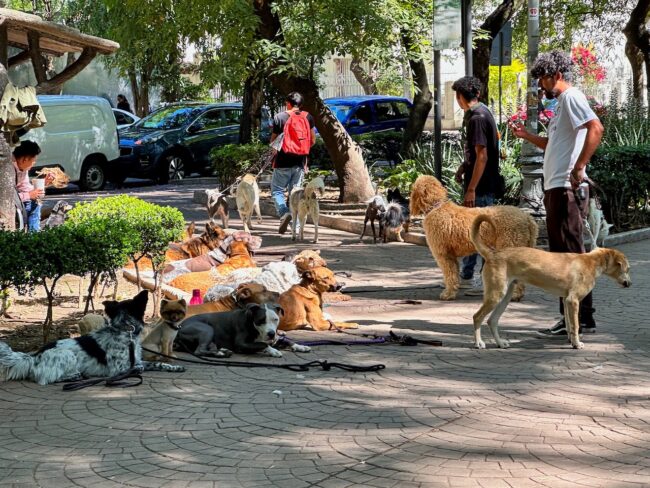
In a matter of minutes we were looking at an art-deco clock.Even with a clock in the park, I saw no ticks.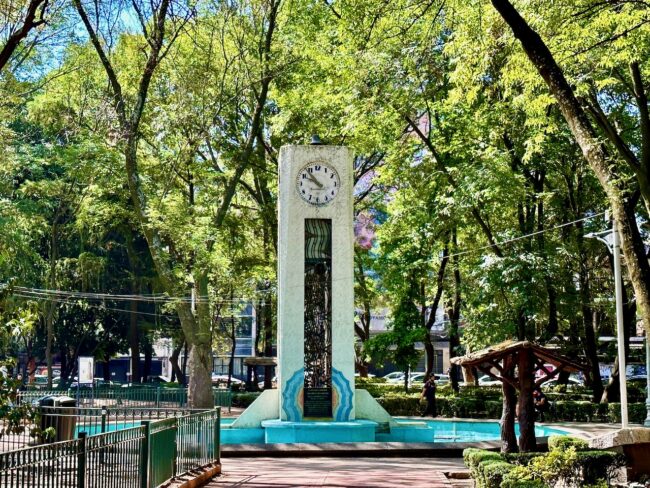
Next, we found ourselves in the Plaza Teatro al Aire Libre Lindbergh (Foro Lindbergh). It’s named after the famed aviator. The first Ford Trimotor (three-engined transport aircraft), bearing the name Mexico, landed at Balbuena Military Field in Mexico City, and the pilot was none other than Charles Lindbergh. On this morning the only thing landing were rollerbladers and skateboarders falling on their butts. Loved that bougainvillea.
Next to the plaza is the hard-to-miss and aptly named Fuente de los Cántaros (Fountain Of The Jugs), a fountain built in 1927. Indigenous Mexican model Luz Jiménez posed for this structure.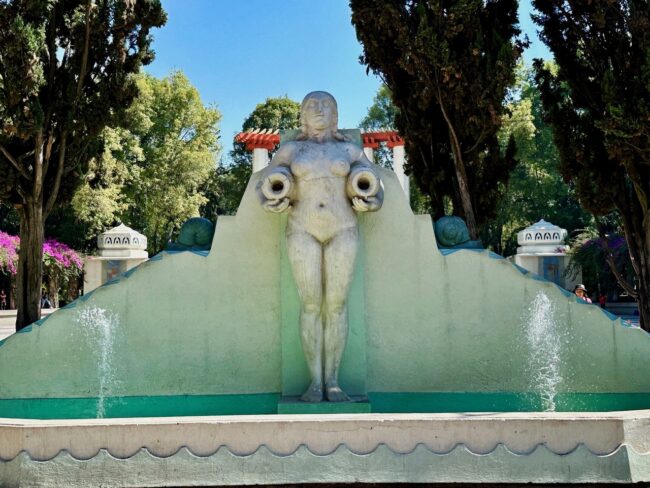
Einstein was nowhere to be found, but we did finally run into Stephen. We all strolled around a duck pond. I had read some of the trees in this area are called Mimosas, but we did not find any champagne.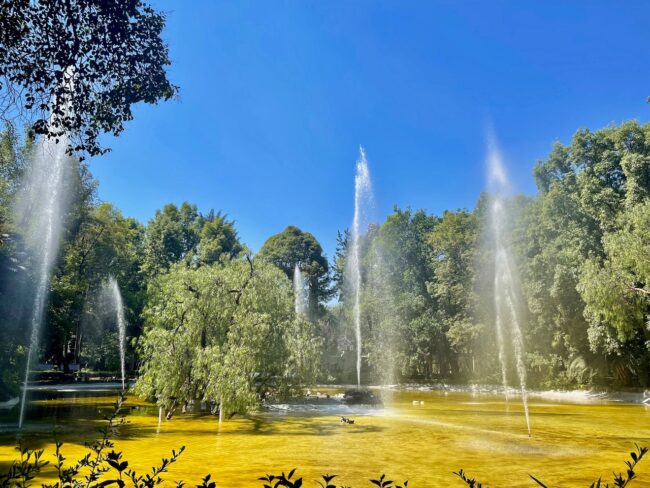
We never did find Einstein on this morning, but I guess everything’s relative. We stopped by a children’s play area before …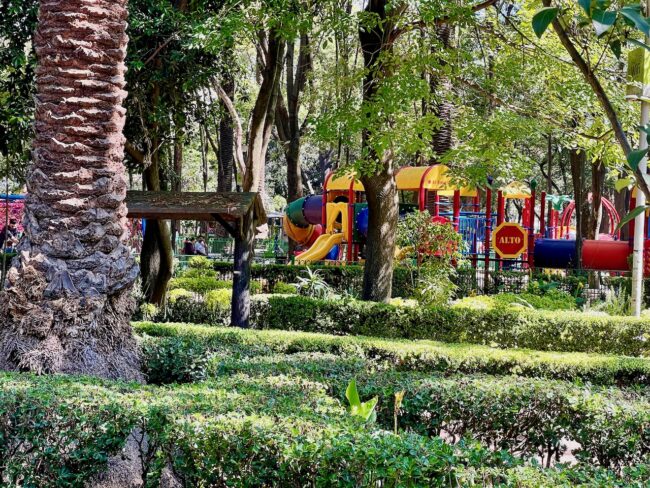
… hitting another art-deco fountain in Plaza Popocatépetl (named after the volcano that is currently … in May 2023 … erupting outside Mexico City). Popocatépetl means. “Smoking Mountain.”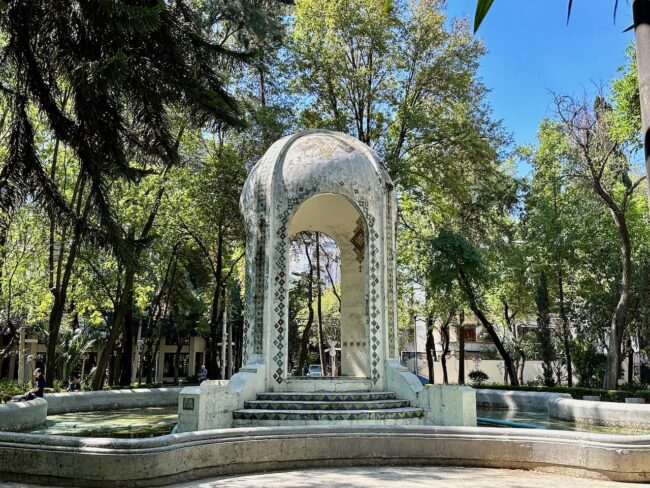
Although we had only walked a short distance, I was already falling in love with this neighborhood.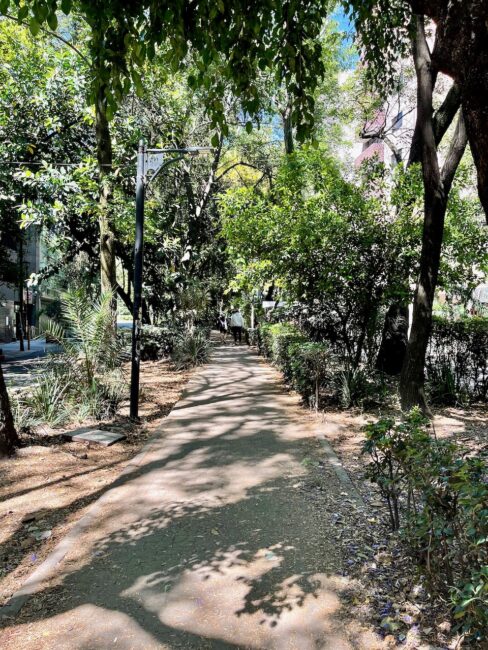
We headed toward the area’s other green space, the smaller Parque España, where a sampling of the city’s energy was on display. The joyfulness of people dancing in the park on a Saturday afternoon epitomized our entire stay in Mexico City. Parque España was established in 1921 to commemorate the 100th anniversary of the end of the Mexican War of Independence.
This park is also known for its welcoming spirit. The Monument to Lázaro Cardenas salutes the Mexican president known for allowing thousands of Spanish Republican exiles who were escaping the Spanish Civil War and Franco dictatorship relocate to Mexico.
I wanted to put a down payment on this house.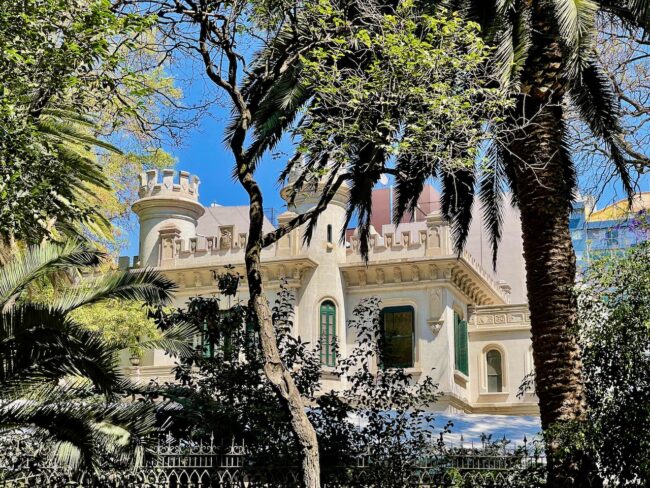
In another ten minutes we were in the Roma Norte neighborhood (Colonia Roma) at a statue that looked familiar.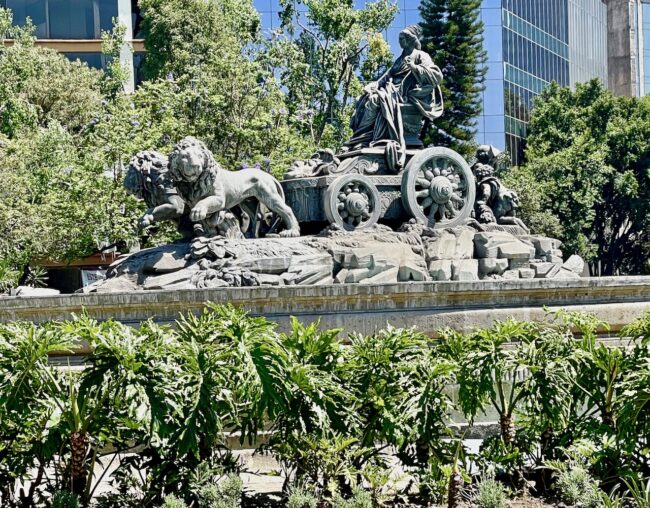
That’s because we had seen it when visiting Madrid on our 2015 trip to Spain. Fuente de Cibeles is a replica of the 18th-century fountain of the same name in the Plaza de Cibeles which stands across from the Palacio de Cibeles in Madrid. Photos from our 2015 trip.
This fountain was a gift in 1980 from the Spanish residents of Mexico City to acknowledge the bond between Mexico and Spain.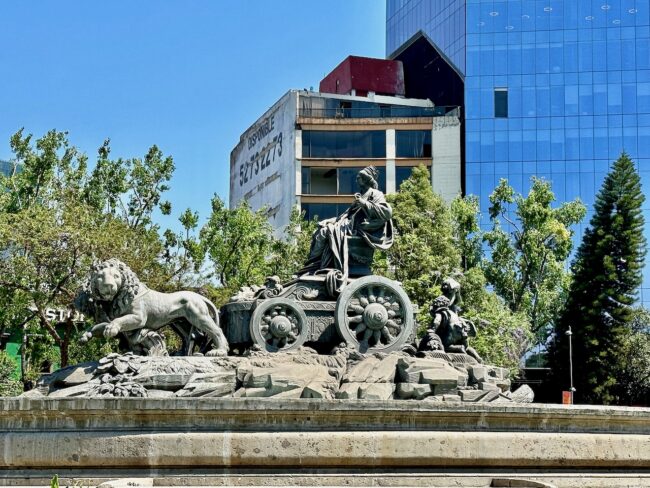
Gazing at a nearby building we saw the mural of Mexico City’s most famous dog, Frida. The white Labrador, who was a part of the Mexican Navy’s Canine Unit, became a national hero while doing search and rescue work during Mexico City’s 2017 earthquake. Frida was able to search collapsed buildings attempting to find people still alive.
In Frida’s career she saved 12 lives and helped recover more than 40 bodies. She died of natural causes at the age of 13. Upon returning home, I learned there is a statue of her, so that’s on our to-do list for our next visit.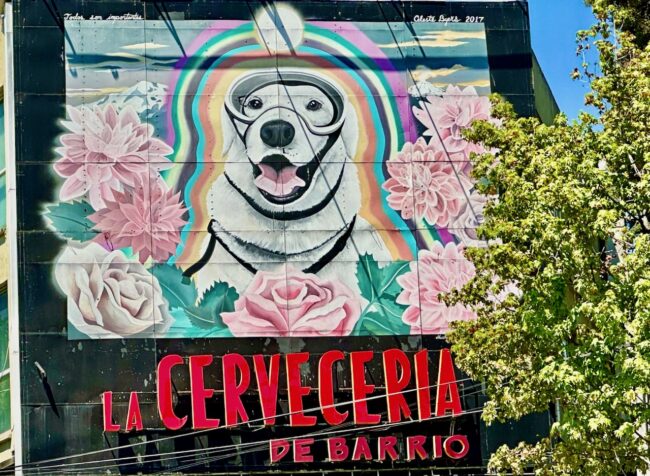
A couple of more murals, and we were on to our next destination.
In about ten minutes we had walked from a replica of a Spanish fountain to one of a famous statue from Florence, Italy, while we were standing in Rio de Janeiro … Plaza Rio de Janeiro that is. That is a statue of Goliath-killer David (not the only one we’d see today) in the middle of the plaza. Plaza Rio de Janeiro was originally name Parque Roma and then Plaza Orizaba, but was changed to honor Brazil’s 100-year anniversary of independence in 1922.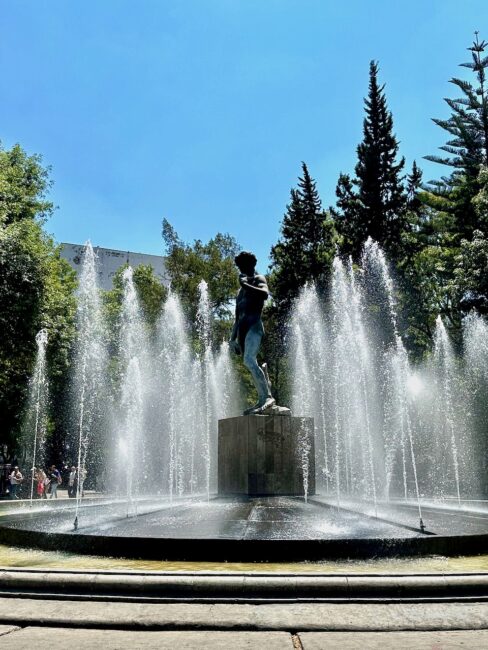
The bronze statue of David was placed here in 1976.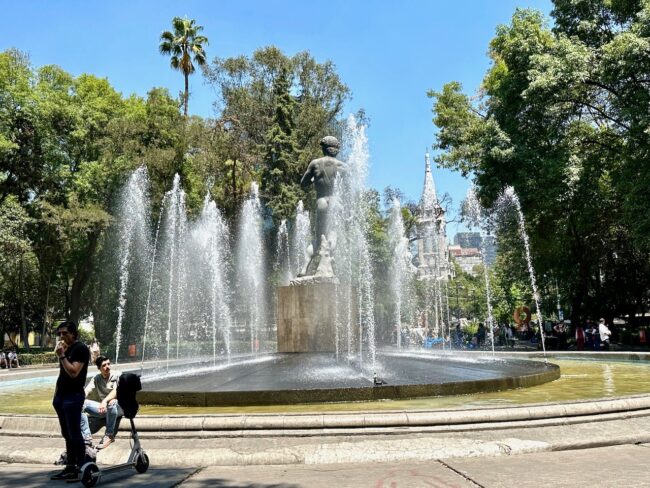
There are also some interesting buildings surrounding the plaza. I thought this might be the well-known Edificio Rio de Janeiro, but it was not.
However, I eventually did find Edificio Rio de Janeiro, which is dubbed “The House of The Witches,” because it has a cone-shaped roof and its two false openings resemble a witches face. The trees were blocking the view of the house, so I had to leave it to my imagination.
Nearby was a church also with a familiar name. Although not as spectacular as La Sagrada Familia in Barcelona (picture from 2017 trip) …
… this La Sagrada Familia isn’t too shabby either, but it did give another opportunity to channel by inner Iron Butterfly and blurt out, “In Sagrada da Familia, baby!” The church dates from the first quarter of the 20th century. It took longer than expected to construct due to the Mexican Revolution.
The interior contains “art nouveau and art deco influences.’
Our walking tour continued as we headed down C. Génova toward our next destination. C. Génova is a pedestrian walkway, and I’m always interested in a building with shrubbery growing on it. If only the Knights Who Say “Ni” could have seen it.
We passed a bar that had our our names on it.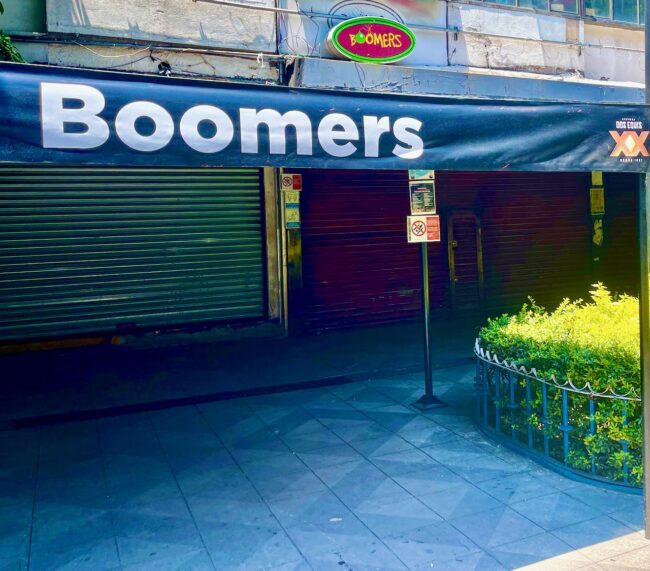
Making a left on Paseo de la Reforma (Promenade of the Reform), standing tall at the end of the street was the Monumento a la Independencia. The monument pays homage to those people who lost their lives fighting for independence.
On top of the monument is a 23-foot gold plated angel that was cast in Florence at a cost of $2.5 million. The monument has become a focal point for both celebration and protest. 
Near the monument was a large number 72 that we thought would be a fun photo to send back to our friend Kim who would turn that number in a couple of days. What we learned was this 72 is actually an “anti-monument,” one of about seven in Mexico City that “serve as a reminder of a range of injustices that have occurred in Mexico.” The 72 memorial remembers “the 72 undocumented migrants who were killed in a massacre in Tamaulipas in 2010 that was allegedly perpetrated by the the Zetas drug cartel.”
By now we were looking for a place to sit down for a moment, and what better place to sit down than at a place serving gelato. The song Devil or Angel came to mind. I’ve never been adept at centering myself.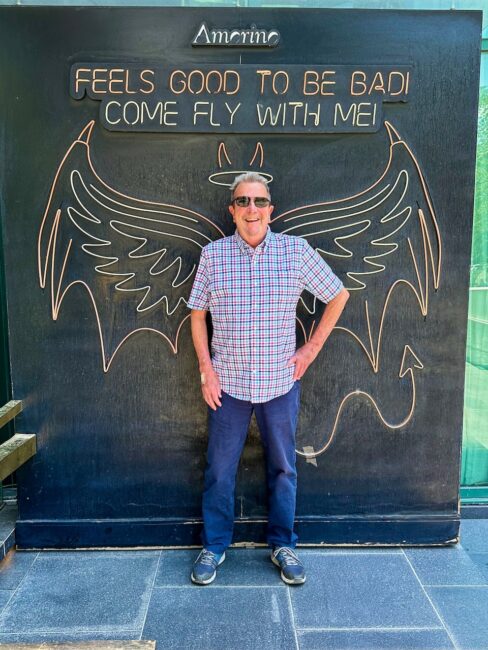
Now that we had dessert, it was time for lunch, even though it was just a little after 1 p.m., we had to ease into this 2 p.m. lunch thing. We walked aimlessly for about ten minutes, and during our stroll we noticed the intricate electrical wiring that is everywhere in Mexico City. It reminded me of when my dad tried to do the electrical wiring at our house when I was a kid. Somehow I survived to adulthood.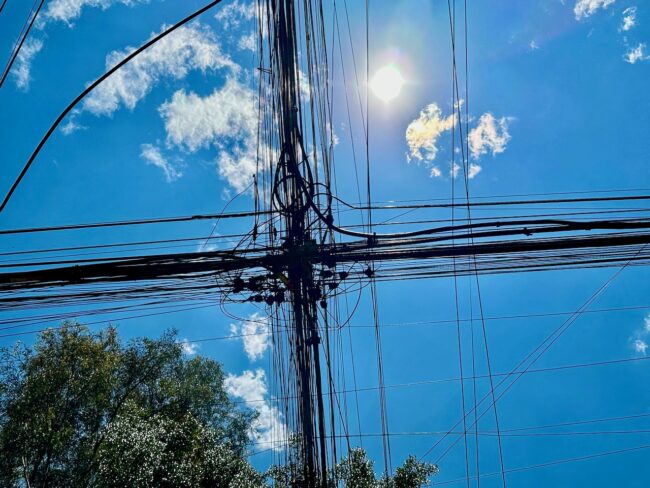
We finally decided upon El Mexicano, which had outside dining, appeared to be favored by locals and, more importantly, served cold cerveza.
Stephen and I went for the dueling Bohemia cervezas. He ordered the regular (Cerveza Clara) while I tried the dark (Cerveza Oscura). I like the Clara better.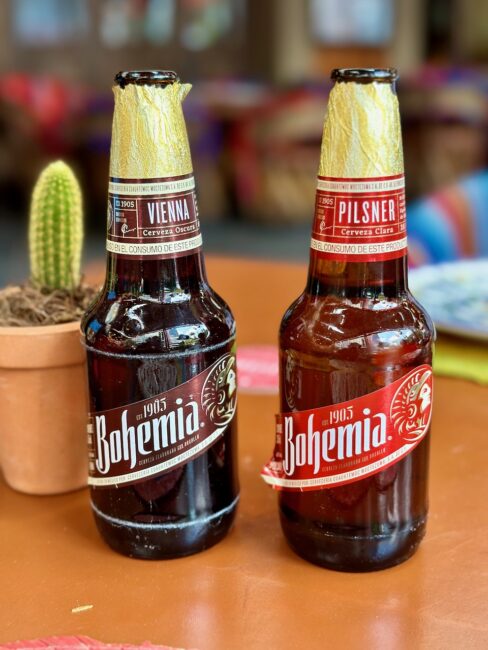
The food was fine, and Tracy went into the restaurant to take photos.
We planned to end our day at the Museo Soumaya, but it was an hour’s walk from the restaurant. Tracy gave me “the look” and I knew it was Uber or divorce. Soon we were in an Uber on the way to the museum.
MaiTai Tom Aside: The total cost for Uber including tips during our nine days? $86 U.S. Such a deal! We spent $150 U.S. just to go from our house to LAX (luckily a friend took us home).
Museo Soumaya is named for the late wife (Soumaya) of multibillionaire businessman Carlos Slim, who at one time was named the “richest person in the world.” The unique design of the building is said to resemble his wife’s neck. All the art is from Slim’s private European and Mexican art collection. I read that the exterior is covered in 16,000 hexagonal aluminum tiles from an aluminum plant Carlos Slim owns. The line to get in looked long.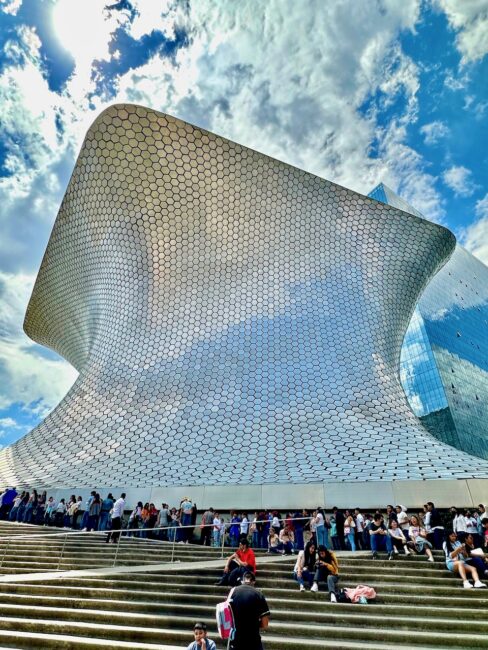
While a man on an elephant trumpeted our arrival, we pondered if we wanted to wait.
Actually the line moved quickly, and within 20 minutes we were inside this massive structure. It’s said that Slim built this museum “to provide a place for Mexicans who may never have the opportunity to travel outside of the country to see these more than 6,000 works for themselves.” To make things even better, admission is free!
Mai Tai Tom Observation: Many in line on this afternoon appeared to be either groups of teenagers or children with their parents. It was refreshing to see kids exploring their culture.
Walking inside the expansive foyer there stood yet another David statue. I quickly looked around for any Florida schoolchildren shielding their eyes.
Rodin’s Gates of Hell was also there, but we didn’t heed the warning from the three gentlemen on top, “Abandon hope, all ye who enter here.”
As you ascend the six-story building we passed a bronze replica of the Piéta, one that has apparently caused much controversy. James Oles, a professor of art and expert on Mexican art observed, “Michelangelo’s Pieta is a white marble sculpture. It’s unclear to me why anybody would want a bronze version of it, and why you would display such a thing in an art museum, since it is neither a Michelangelo nor a close approximation of the Michelangelo.”
There are other replicas of famous sculptures, including Apollo and Daphne (the original in Rome’s Galleria Borghese is our favorite sculpture) and The Three Graces.
There is also a Piéta made out of terracotta. 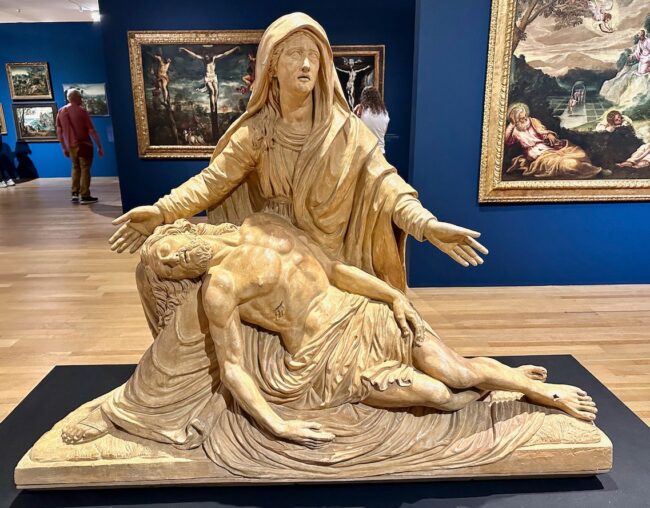
Artwork from famous artists like da Vinci …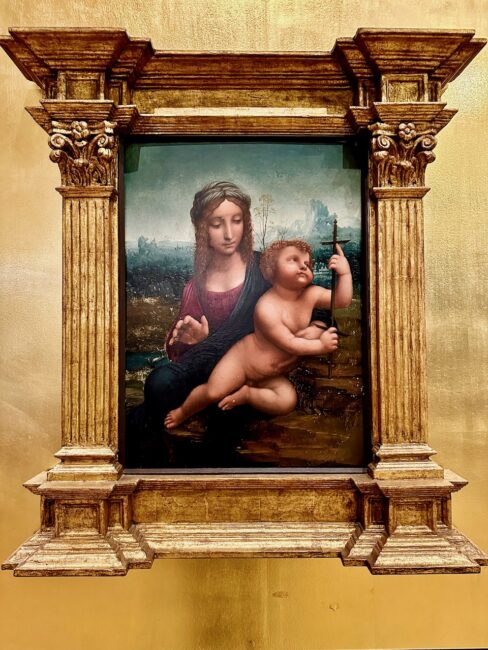
… to lesser known artists like Belgian painter Hendrick van Cleeve’s rendition of The Tower of Babel.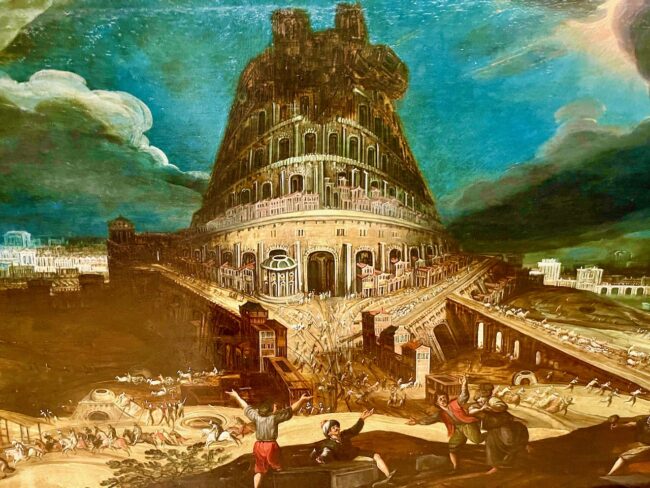
Art is displayed on colorful backgrounds on the different floors.
Fortunately (for me anyway) after the first set of stairs a series of ramps encircle the museum to lead you to the top floor. Here we see Miracle of the Tepeyac by Mexican artist Jorge González Camarena from above and in front.
There were a number of colorful paintings by Mexican artists.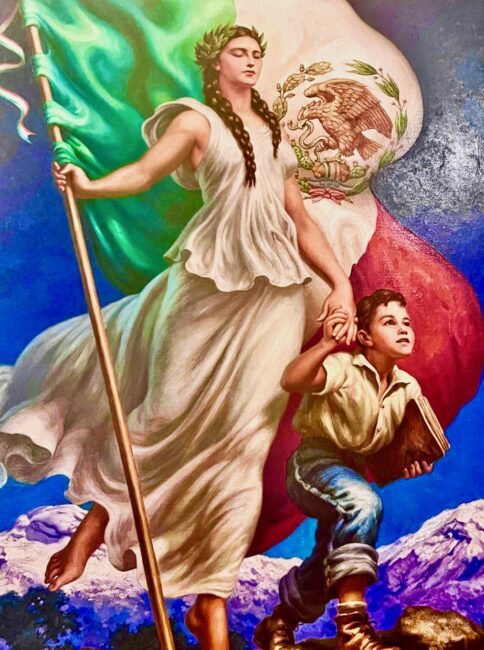
We enjoyed this area …
… and its murals.
We ran into Thebes Seated On An Armchair before heading to the top level. That had to be uncomfortable.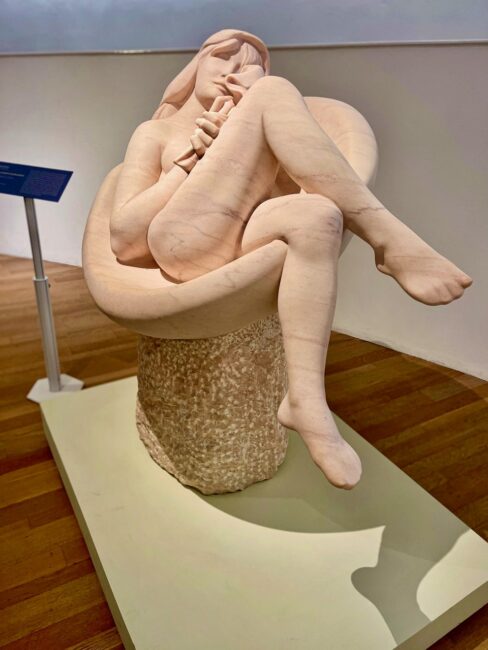
Soumaya apparently was a big fan of Rodin, so there are more than 300 pieces on the top of floor which is “Sculpture Central.” Here we see Rodin’s Les Trois Ombres (The Three Shades), who are the enlarged version of the people on top of The Gates Of Hell.
This bust of Napoleón is by another Frenchmen.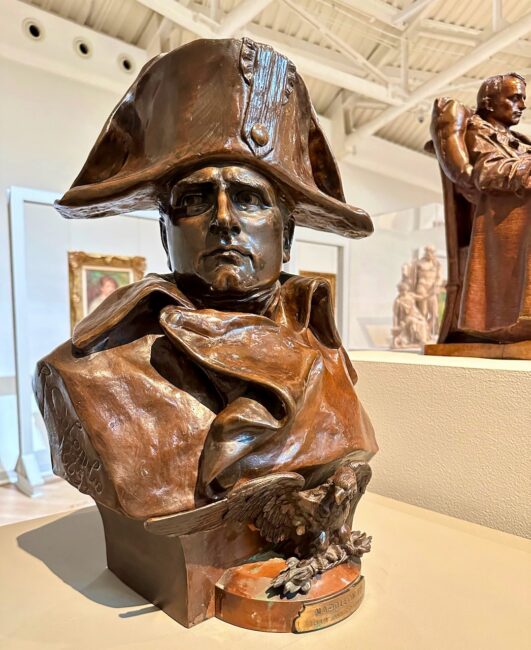
As we headed back down, the museum was even more crowded inside. I’d definitely go back, as its layout is kind of helter-skelter, so we didn’t see everything we wanted to.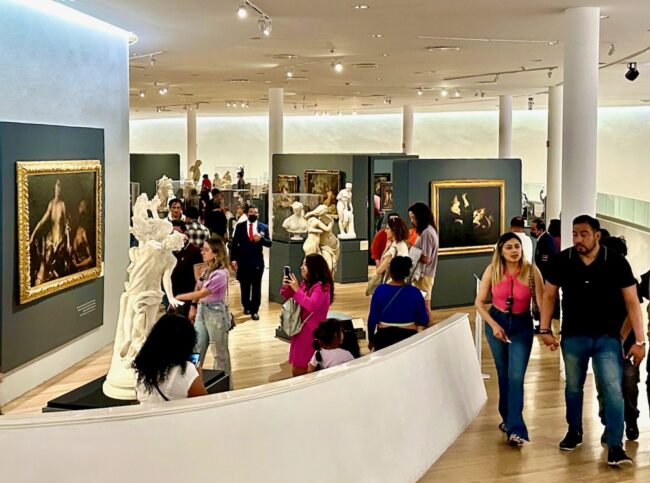
We did catch some more colorful paintings …
… on the way down.
And even a Fabergé egg.
It was after 4 p.m., and the line was shorter when we exited. If you visit the museum on the weekend, this might be a good time to enter.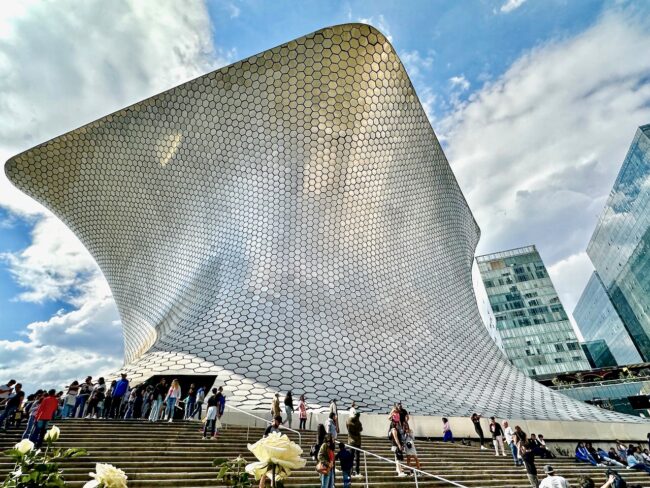
This view from where we caught our Uber shows this museum from another angle.
On the drive back to Condesa, in a roundabout at Paseo de la Reforma, out of the car window Tracy captured the 1942 Diana, The Huntress Fountain. According to GPSMyCity, “Some sections of the population appreciated the sculpture while ultra conservative sections of society called the Decency League protested against the nude depiction of Diana and forced the artist to put underwear on the statue.” Sanity prevailed, and she is back to her natural self.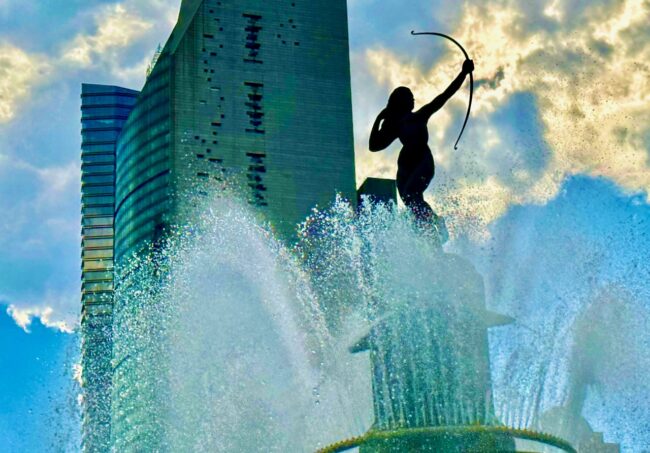
After disembarking near Parque México, we walked past Rojo Bistrot, which our host at The Red Tree House said was one of his favorites. Since it was about 4:45, we figured this was just a busy late lunch crowd.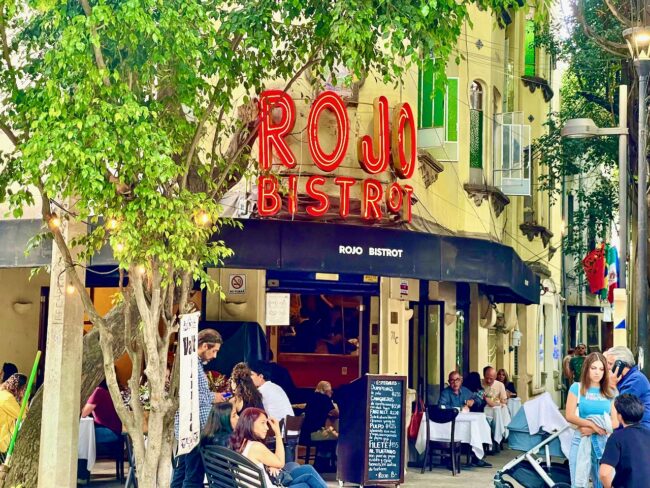
Refreshed, we went downstairs for our last Red Tree House Happy Hour. After meeting and sipping wine with a nice couple from Southern California, it was off to dinner at Antolina Condesa (Aguascalientes 232, Hipódromo, Cuauhtémoc).
While Tracy started with a little vino, Stephen and I decided to go the mezcal route with a Papanila; mezcal, vanilla, orange liquor, tonic water and sparkling wine. Our first Mezcal drink was a success.
Not to be denied on this evening, I ordered the Guacamole “Antolina;” avocados, grasshoppers, pico de gallo and tomato. Grasshoppers are very popular in Mexico, a great source of protein and give you an incredible leaping ability (the last part may be false). In any event, the guac was great and had a little crunch.
It was now time for our “Wow” dish. A Nopales tartare; Nopal cactus with cucumber, red onion, red onion, jicama, capers and avocado dressing was totally spectacular.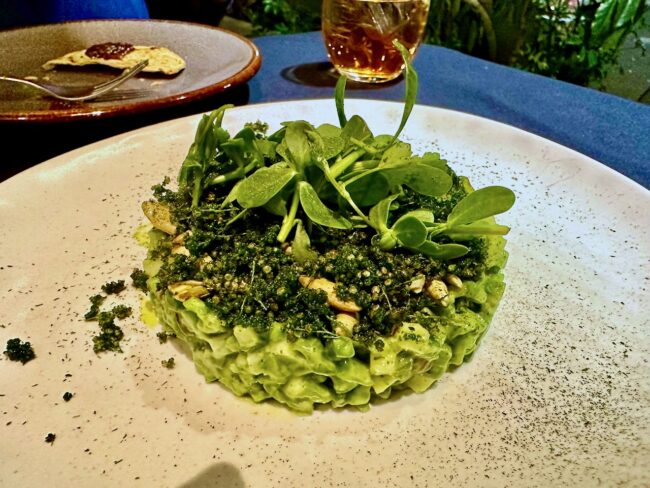
Dinner was good, too. Tracy had a delicious Duck magret in amarillito mole; with a corn tetela (masa treats) stuffed with cheese, while I also loved my Emoladas de mole negro mixe; tortilla stuffed with cheese bathed in black mole.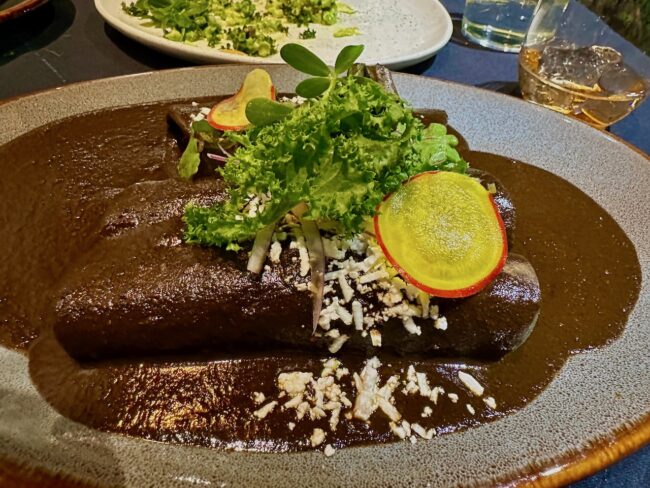
Stephen had the prettiest dish, a tasty Pescado Zarandeado; seabass with chipotle achiote sauce.
Once again, dessert was off the table as we were stuffed more than that corn tetela. Antolina Condesa has the perfect neighborhood feel, and when I move to Condesa (a man can dream), I will spend many an evening here.
We took the short stroll back to The Red Tree House. Even at night, this neighborhood proves it loves its dogs. The red-lighted tree told us we were home.
Tomorrow, we would switch bases to Centro Historíco, where we’d spend the next four nights.
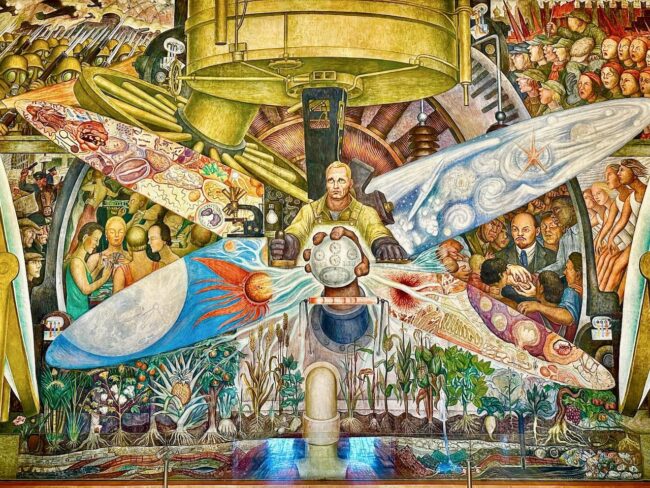 The hotel’s lobby was as dazzling as advertised, but before we could check in we’d hit a palacio that contains the works of three great Mexican muralists, stop by the gorgeous post office, duck into an azulejo-laden building, visit a museum showcasing the evolution of Mexican Art and admire Mexico City’s Cathedral. After checking in, we would meet our friends Tim and Sheila on our hotel rooftop bar/restaurant for some well-earned libations and gaze out on the expansive Zócalo before heading out to dinner in a restaurant with trees inside. I don’t even know why we sleep.
The hotel’s lobby was as dazzling as advertised, but before we could check in we’d hit a palacio that contains the works of three great Mexican muralists, stop by the gorgeous post office, duck into an azulejo-laden building, visit a museum showcasing the evolution of Mexican Art and admire Mexico City’s Cathedral. After checking in, we would meet our friends Tim and Sheila on our hotel rooftop bar/restaurant for some well-earned libations and gaze out on the expansive Zócalo before heading out to dinner in a restaurant with trees inside. I don’t even know why we sleep.
Next – Chapter Two: Day Three: A Gran Tiffany Stained-Glass Ceiling, Los Tres Grandes, At The Crossroads, Hey Mr. Postman, Azulejos Restaurant, Is He Taking A Selfie?, Waiting For The Room, Carnival At The Cathedral, Champagne Welcome, Cocktails With Friends On The Rooftop, Looking Out At “The Birthplace Of The Constitution” and a Historíco Meal

